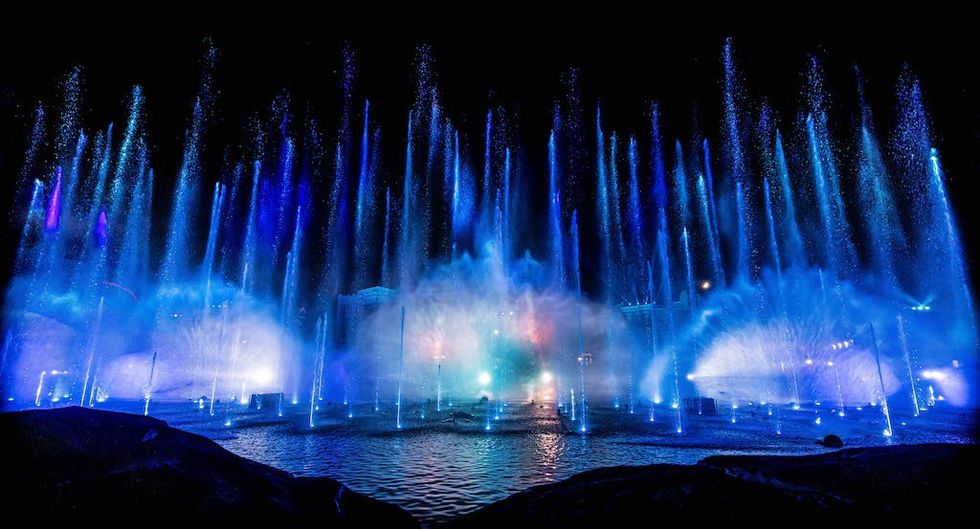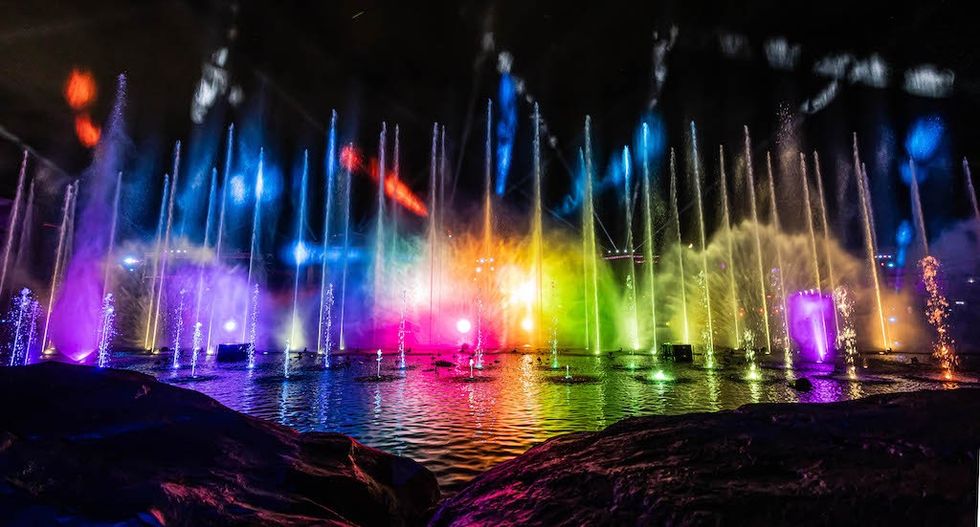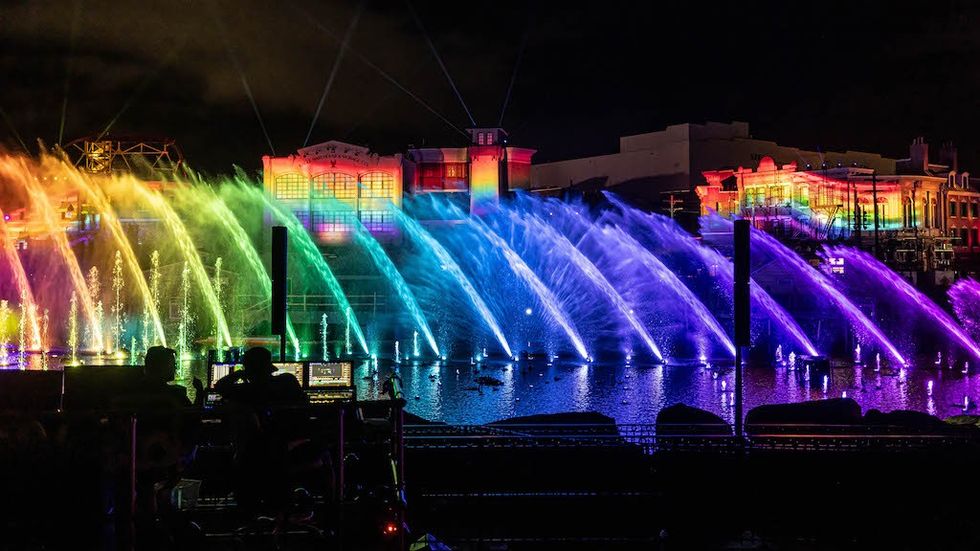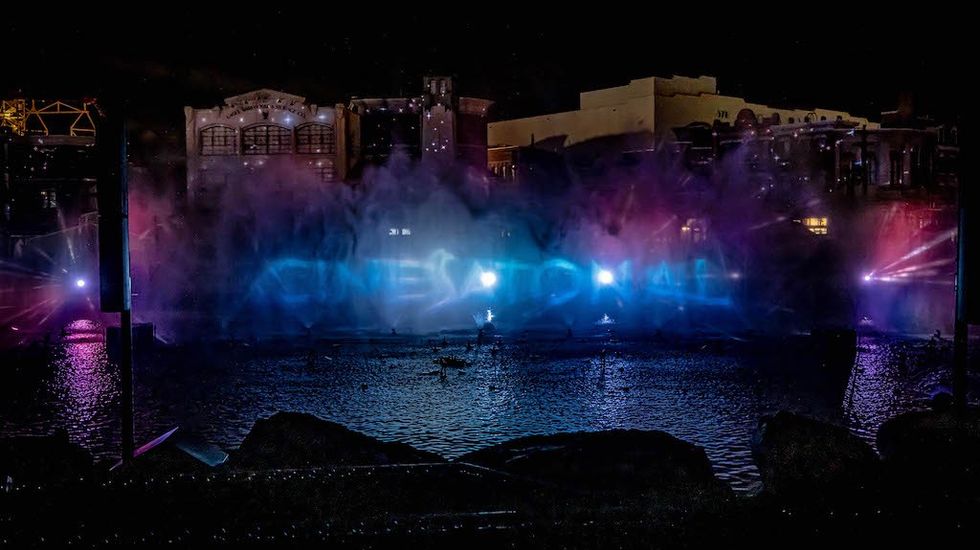greenloop is blooloop’s annual conference focusing on sustainability in visitor attractions. The event returned on 13 & 14 May 2025, marking our fifth year of driving meaningful change. greenloop 2025 included world-class speakers, cutting-edge science, and practical insights.
Through real-world examples from top industry leaders across sectors, we explored the most pressing topics and collaborated on solutions that can make a real difference.
Over two days, the virtual event featured speakers from Walt Disney Imagineering, the Gallery Climate Coalition, the Shedd Aquarium, PortAventura World, OMA, Natural History Museum of Los Angeles County, Houston Zoo, IZE, Environment & Culture Partners, and more.
Attendees heard the latest climate science from a world-leading climate scientist, gained insights into extreme weather and how this will impact our industry, and explored how to engage with suppliers to inspire climate action.
Other key topics included AV reduction, reuse and recycling, Net Zero and offsetting, digital carbon, AI, greenwashing, guest engagement and more.
Did you miss it? You can watch greenloop on demand. (Attendees you can view for free - watch out for the code in your email or contact events@blooloop.com)
Catch up on greenloop 2025
hereNo hype, no politics: just the science behind the hottest year on record
Professor Peter Cox, director of the Global Systems Institute and professor of Climate System Dynamics in Mathematics at the University of Exeter, opened greenloop 2025 conference with a look back at the extreme weather and record warming of 2024. He also discussed what this means for the future.
The World Meteorological Organization (WMO) has confirmed that 2024 was the warmest year on record, based on six international datasets. The past ten years have all been in the Top Ten in an extraordinary streak of record-breaking temperatures, and 2024 was likely the first calendar year with a global mean temperature of more than 1.5°C above pre-industrial levels.
Failure to cut global CO2 emissions to date means we are close to missing the UNFCCC target of avoiding 1.5°C global warming. 2°C also looks difficult using conventional methods alone.
The evidence is clear
Cox shared that evidence of climate change has never been clearer, with the ten hottest years on record all happening in the last decade. There was also a record number of $1 billion+ climate and weather disasters in 2023. However, at the same time, climate denialism has never been more prominent.
"I’m hoping this is a last gasp of denialism … and maybe will spur the rest of us into action," said Cox. "[It's] a disturbing time, but also hoping it will steel us into being less complacent.
"To solve climate change, we’re going to have to work together like we’ve never done before, and that’s a good thing," he added.
While he said that we are not good as a race in aligning what’s in people’s self-interest with what’s in the planet’s self-interest, he pointed out that there are some promising signs. For instance, solar cells have proved much more efficient than expected, and although fossil fuels still provide 60% of global electricity, there has been exponential growth in wind and solar.
Some are now considering whether we need to develop 'emergency' geoengineering approaches until we can get everyone to net zero.
Art as regeneration: the White Cube model to empower post-plantation sustainability
Next, David Gianotten, managing partner and architect of OMA, spoke to greenloop 2025 attendees about the innovative White Cube project.
Through art and architecture, the project connects people on an abandoned Unilever plantation in the Democratic Republic of Congo to the Western museums and the art establishment that has benefited from the commercial and cultural exploitation of the region. The aim is to redirect capital to enable the local people to buy back and regenerate their land.
This project offers a framework for institutions to move beyond symbolic gestures of decolonisation to real impact for the future. Gianotton says the team wanted to start the debate about colonial past and diversity, looking at a future for the people rather than only making money and putting sponsorship in the high-end art scene just for the happy few.
Genuinely listening, he said, was key:
"When we came, they thought that we were the next colonisers and that we would benefit from their land again. So there was a lot of hesitation. We immediately started engaging in the conversation."
Listening and learning
"We didn't present them a plan, but we asked them, 'What do you need?' And that was a completely different tone of voice. So they immediately understood that we were serious about not only listening but also acting, and we were not there to give the money, but we were there to improve.
We didn't present them a plan, but we asked them, 'What do you need?'
"When you try to approach something, it's easy to shout, but it's very difficult to listen. And I think for us it was to show that if you approach it from a different angle, you can actually empower a society."
The most significant learning was that when you only have an idea and are willing to shape that idea with input from the people that it is about, then great things can happen: "Start a debate and see where it leads you."
Dialogue with the environment: How PortAventura nurtures sustainability engagement with visitors and suppliers
Choni Fernández, customer, sustainability and communications director at PortAventura World, spoke about how the resort nurtures sustainability engagement with both suppliers and visitors.
Fernández began with an overview of PortAventura's sustainability journey to date, from the formation of a dedicated green team in 1997 and the operator's first environmental policy in 2000, through to becoming a carbon-neutral resort from scopes 1 and 2 in 2020 and being the first theme park to achieve B-Corp certification in 2024.
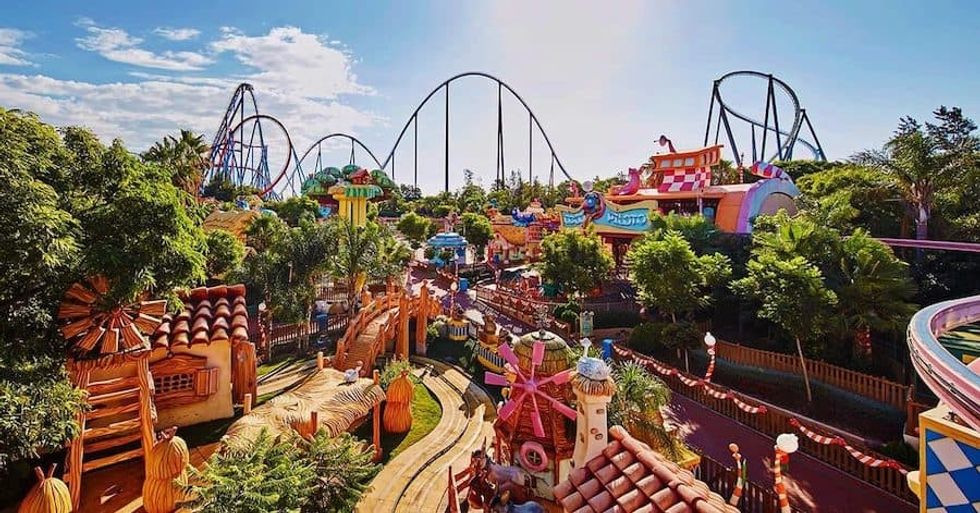
Scope 3 is now a significant focus for PortAventura. In this greenloop 2025 session, Fernández spoke about the importance of working in partnership with stakeholders to achieve its goals, saying: "Sustainability is not a journey you can do alone."
Entering an authentic dialogue
Seven years ago, when the operator first began running Dialogue with Suppliers sessions, 20 suppliers took part. The latest edition saw 180 participants. "Potential ideas start small, and they grow and consolidate," said Fernández. They found that suppliers wanted to understand what PortAventura expected of the companies that it works with, and to learn about its sustainability goals.
"So when we explain we are looking for products that are more friendly with the environment, and then you explain your vision, what we receive back is a lot of information and different proposals that can be aligned with our strategy. That is really a win-win strategy when we start talking to them."
In line with its commitment to sustainability, PortAventura World proposed over 200 suppliers for the 2024 edition of the Sustainable Suppliers programme by UN Global Compact Spain.
When it comes to engaging visitors with its sustainability goals, Fernández said that, with 5 million guests annually, they have 5 million opportunities to connect with guests and inspire them. Sustainable initiatives are integrated into the park experience, and the resort also runs educational campaigns on topics like zero plastics and renewable energy.
The future of aviation - will sustainability ground business travel?
Business travel has a substantial environmental footprint. However, travelling to meet in person and attend trade shows can be seen as a non-negotiable part of doing business today.
It can be hard to see how to reduce what’s viewed as a vital part of doing business. And a reticence to face up to the carbon cost of travel can prevent companies from even looking at their carbon footprints.
If aviation were a country, it would be in the top 10 of the world's biggest emitters.
In this session, Christopher Surgenor, a key figure in the aviation industry’s move towards sustainability, explored the question: Will innovations in aviation save business travel, or must we all stop flying now?
As programme director for Aviation Carbon Events and the editor and publisher of GreenAir News, he is at the forefront of discussions and solutions to reduce the sector’s carbon footprint.
Speaking about the impact of travel, he said: "If aviation were a country, it would be in the top 10 of the world's biggest emitters," adding that aviation is probably one of the hardest industries to decarbonise.
The aviation industry has set ambitious targets for achieving net-zero emissions by 2050, and there is significant innovation around sustainable fuels, electric aircraft and flight operations. Yet: "65% of emissions will have to be reduced through sustainable aviation fuels, which, to be honest, make up less than 1% at this moment."
The session with Christopher was followed by some top tips on calculating and reducing air travel.
Greening the scene: sustainable design for good
In this session, Innes Johnston, director, Bristol office leader, partner, Max Fordham; Sean Mangan,design builder, Rockscapes of Canada Inc.; and Richard Maddock, director, Kay Elliott, explored the evolving world of sustainable destinations.
greenloop 2025 attendees gained insights into how innovative materials, eco-conscious strategies, and nature-inspired systems are reimagining how we design immersive spaces.
Kicking the discussion off, Mangan explained that, when talking about sustainable design choices, it's not just about sustainability - it’s also about better business and better value: "There’s a lot of business around this and a lot of opportunities in sustainability."
One of the topics he spoke about was thermal plastics, or 3D printing. Materials include PETG, which is recyclable, as well as being UV, saltwater and animal safe, and TPU, a thermal plastic polyurethane that is flexible and often used for fan coral. Other materials are ASA, which is also UV stable and animal safe, and the stronger carbon fibre and nylon.
He also spoke about eco ponds and their benefits for animal welfare, sustainability, maintenance, cost, and guest experience.
Johnston then spoke about making the best of the materials available.
"In my opinion, advising on organisational emissions is a discipline very vulnerable to ambiguity, complexity, and a lack of robust data," he added.
Johnston advised that organisations need to work with specialists at different stages. To do this, it is essential to commit to the process - try your best to get good data, and be willing to make changes when you learn more.
Finally, Maddock talked about how a visit to an attraction can spark a long-term impact, saying we need to move these leverage points from ‘business as usual’ into a ‘one planet’ living space:
“We are an industry of storytellers. Why not embed regenerative values - behaviours guests take home?”
Innovation in sustainable design with Walt Disney Imagineering
Disney’s Emily Dow, architecture & design studio executive and Caitlin Krasovic, sustainability & design strategy manager, Walt Disney Imagineering (WDI), spoke at greenloop 2025 about Disney’s progress in sustainable design, including recent innovations in projects across the globe.
Disney is committed to reducing absolute emissions from direct operations (Scope 1 & 2) by 46.2% by 2030, against a 2019 baseline, and achieving net zero emissions for direct operations by 2030.
Dow began by giving an update on some of the latest Disney projects. It is, she said, an exciting time to be part of the themed entertainment industry.
“During this time of growth, there's also never been, at least in our careers, such an industry-wide focus on sustainability and climate resiliency. There has never been a better time for us to work with all of you together to try and ensure that sustainable design and climate resiliency are fully embedded into our parks, resorts and experiences worldwide.”
One project featuring sustainable design they shared is the Island Tower at Disney’s Polynesian Villas and Bungalows, Walt Disney World Resort. Inspired by original concept art, it features vertical massing to capture views and breezes, integrates sustainable design principles, and celebrates Polynesian culture.
Storytelling and sustainability
“We drew inspiration from Moana and natural elements like earth, wind, water, and sky to blend Disney storytelling with real-world environmental themes,” said Dow.
Krasovic added: “It brings many layers of storytelling to celebrate the spirit of the islands, weaving Polynesian stories, conservation stories, and Disney stories throughout the resort."
The project came to life through collaboration with architects, designers, engineers, creative directors, project and construction managers, food and beverage partners, and more. “They embraced our 2030 environmental goals from the earliest stages, helping us pilot new processes and implement strategies that now inform our current and future work.”
Dow and Krasovic also shared details of the digital twin project at Hong Kong Disneyland Resort, which is helping optimise energy use across the park. This model has an embedded AI agent, and the digital twin takes real-time data like weather forecasts, park activity, and hotel bookings and predicts the cooling demand. It then calculates the most efficient operational mode for that moment.
"Our full digital twin platform actually went live in April of 2024," said Dow. "It's been running live for about a year in a pilot mode before that. Since then, we've seen about a 3% to 5% energy reduction."
Wrapping up the session, Dow added: "Just as Walt said, curiosity and purpose really drive many of us at Imagineering, and I know it drives many of you at greenloop today. We believe that when we combine our storytelling, creative imagination, and our technical know-how, we can really all make a tremendous impact on our industry and the world."
Sustainability and conservation through AZA SAFE: Coral collaboration
Next up at greenloop 2025, speakers Katey Leban, conservation coordinator for AZA, Mitch Carl,curator of aquatics at Omaha’s Henry Doorly Zoo and Aquarium, and Ross Cunning, Ph.D., research biologist at the Shedd Aquarium in Chicago, shared an active example of conservation and sustainability at work.
Corals are listed as Threatened by the US Endangered Species Act and Critically Endangered by the IUCN Red List.
The Association of Zoos and Aquariums’ (AZA) signature conservation programme, SAFE: Saving Animals From Extinction, draws on the combined knowledge of aquariums and zoos to generate significant, long-lasting impact for animal conservation. In 2018, a group of committed organisations collaborated to form SAFE Coral.
This project brings together institutions of all sizes, from the coasts to the Midwest, and combines diverse skill sets to save these extraordinary invertebrates from extinction.
On the purpose of AZA's SAFE programme, Leban said: "We're not trying to invent the conservation wheel, but learn from friends, expand our knowledge and how we can move forward and create a meaningful impact for these species that are on the brink."
Teaching visitors about the threats coral faces
Carl explained that the scope was to take 3000 corals out of the wild and put them into AZA institutions, reproduce them and then put them back into the wild. "These are corals that few have kept before, so getting the husbandry in line and reproducing them is fantastic. To get these corals to reproduce in captivity is like the holy grail.
"We bring people to our facilities, teach them how to do it, go out and start these projects, and keep these corals alive and reproducing."
Coming at the project from a marine biologist perspective, Cunning added:
"Each polyp, each filled with single-cell algae, is harvesting energy from the sun, and giving that to the coral as its primary energy source. This builds the entire architecture of coral reefs. That symbiosis with the plant cells is why corals are so threatened. When temperatures get 1% warmer, the polyps expel the tiny plant cells in their tissues, becoming white, and then they lack their primary food source, leaving behind a dead coral reef."
Shedd Aquarium has 2 million people coming through its doors, meaning it can teach visitors about the threats facing corals and the work it and the SAFE coral program are doing to conserve these corals. "Doing the research at the aquarium activates our unique resources and gets that message in front of the public."
He also said: "We need to be solving the root problem, stopping the warming of our oceans, which would prevent coral reefs from existing in the future."
Waterparks with purpose: how municipal attractions can drive local impact and meet global goals
Closing day one at greenloop 2025, Nancy Patterson, director of design and business development, OpenAire, and Rick Coleman, founder and CEO, American Resort Management, presented Epic Waters, a 70,000 square foot indoor/outdoor water park at the heart of the Epic Central development in Grand Prairie, Texas.
This 90-acre, city-led sustainable development exemplifies how attractions can drive community impact and meet global sustainability objectives.
One of the sparks for this project was that the city didn’t have a recreation centre for the community, which was not a high-income area. "The city had a dream of building something that would be an asset for the community and residents," said Coleman.
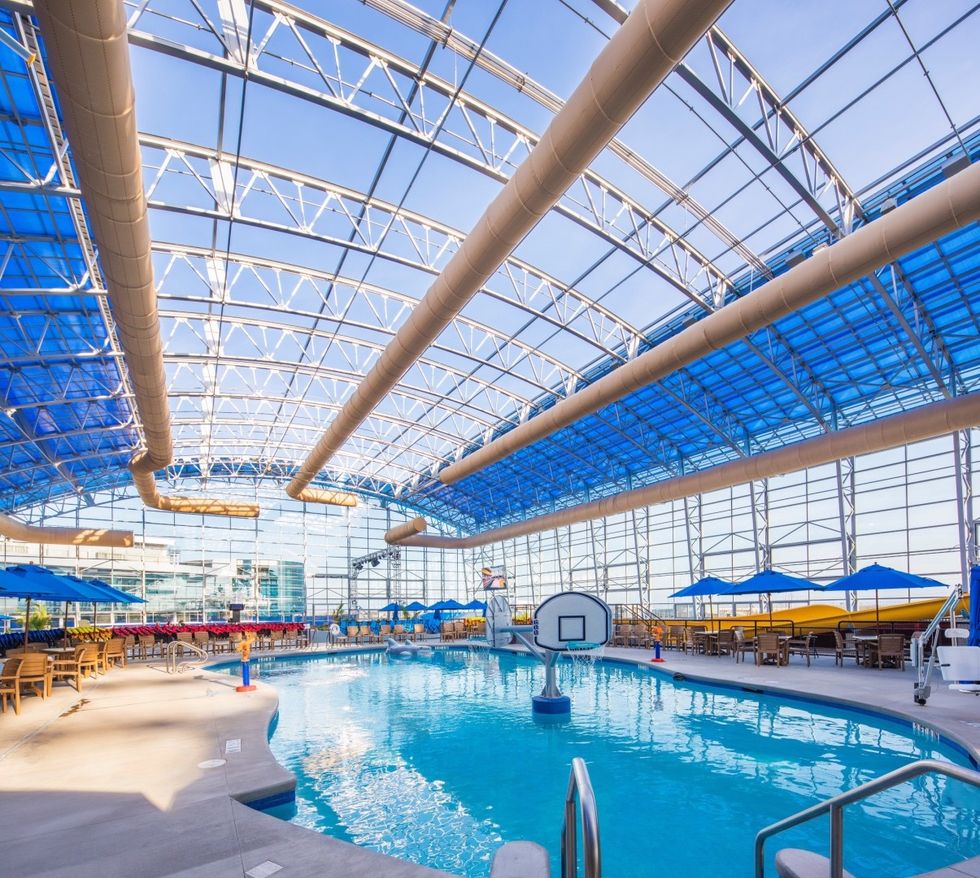
The city wanted to build a rec centre for all ages. They sought a financially profitable water park, a circular pond on the site, opportunities to activate the pond, and an all-abilities playground. It had to be viable, and the water park had to generate enough income to support everything else.
Patterson added that this case study demonstrates the ability to create a self-sustainable project, bringing jobs to the community and helping people rise above poverty. The water park is made accessible to groups that may not be able to afford it through church groups and educational groups, and it generates revenue for the area, with the money reinvested in the facility and future updates.
OpenAire's retractable roof technology helps bring some of the outdoors indoors at the indoor waterpark.
"Epic and its campus show other cities that you can build something even in a small community that attracts people from all over," said Patterson.
"After three years, we started getting calls from cities around the country," said Coleman. "It's opening eyes to lots of communities. The model is scalable for all sizes."
Net zero & carbon offsetting – how to keep things simple
Day two at greenloop 2025 began with Danny Chivers, hosting a session to demystify the jargon and set out the simple climate actions we can take to give us back control and a sense of shared purpose.
Chivers is a freelance carbon analyst and climate action consultant. For nearly two decades, he has provided environmental guidance to a wide range of organisations, specialising in international humanitarian charities and the culture sector.
The key takeaway from this session was that you don't need to set an organisational net zero target in order to support global net zero.
Chivers, who is sustainability advisor to the Gallery Climate Coalition (GCC), said: “We have decided that actually to tackle the climate crisis we don't need to set an organisational net zero target or do any sort of offsetting. And instead, what we've decided makes a lot more sense is just to set simple carbon reduction targets and then extra spending on whatever other external climate projects make the most sense to you.”
Targets aren't everything
The GCC is a collection of over 1800 arts organisations in 50 countries, all of whom are committed to at least halving their emissions between 2019 and 2030. Its alternative approach includes not spending money on offsets or removals but instead setting funds aside in a strategic climate fund. This is then spent on accelerating carbon reduction internally and/or supporting more effective frontline projects. Break out of the offset model, and anything is possible, he added.
The vast majority of people want climate action, and when they see it, they'll be pleased about it.
He also said that businesses often underestimate how much the public wants to see action on climate change: “Climate action is incredibly popular globally. Within countries like the UK, it's around 70- 80%. Even in the US, it's around 70%.
“What we can all do, every public-facing organisation, is use our platform to talk about this stuff in any way we can. And especially if we're putting solutions into place, creating change, talking about it, making that public. Because firstly, audiences will love it. The vast majority of people want climate action, and when they see it, they'll be pleased about it.
"Secondly, it gives people confidence that other people are doing stuff. So it's safe for them to talk about it too, and that they can raise it in their workplaces and their communities and call on their political leaders to do stuff.”
Digital Carbon 101 and green AI
Following this, Catayoun Azarm, a customer engineer at Google Cloud in Dublin specialising in AI/ML and databases/analytics, spoke about how Google is managing the energy demands of AI.
Google is committed to sustainability, aiming for net-zero emissions by 2030 and 24/7 carbon-free energy for its data centres and campuses. The company is tackling AI’s energy footprint through more efficient hardware like its Trillium TPUs, optimising AI model training to reduce energy, and running some of the world’s most energy-efficient data centres using AI-powered systems and responsible water stewardship.
"Looking towards 2030, the demand for computing and power usage is growing significantly. However, data centres are a small part of global emissions, and Google's data centres account for about 0.1 percent of global electricity demand. So our commitment is to manage this growth responsibly through efficiency and also transitioning to carbon-free.”
She added that AI can be a truly transformative tool for sustainability. "We use AI internally to significantly improve the energy efficiency of our data centres.” Google also uses it to analyse satellite data for deforestation, to track methane emissions with partners like the Environmental Defense Fund, or for broader wildlife and habitat analysis.
“At Google, we are actively working to make AI more efficient through optimised hardware like our TPUs and by optimising the whole model architecture.”
“Technologies like mini nuclear reactors and fusion energy are exciting prospects for future low-carbon power that could eventually support data centres....Our strategy centres on decarbonising our current operations and the grids that power them. So let's say that's going to be the focus.”
In addition, this session also included top tips on calculating and reducing digital carbon.
Closing the loop: how attractions can lead on e-waste sustainability
Raymond Kent, COO, Executive Vice President at Red Dragon Arts, LLC and board member of SAVe, and Martin Howe, CEO at Dapper Labs Ltd and chairman at Teq4, discussed the need for the AV industry to be more sustainable. This greenloop 2025 session covered greener ways of thinking about AV within visitor attractions, such as Smart AV and a 360-degree lifecycle approach.
E-waste is, said Kent, "One of the fastest growing problems that we have globally that often isn't really thought about. Less than 20% of electronics get recycled responsibly.”
“28% of the e-waste problem is just coming out of entertainment. That includes themed attractions, live entertainment, the film industry and even sports... Museums as well, and things like audio visual and performance lighting, and theatre technology.”
One of the topics Kent covered was the circular economy. "What is long life versus changing technology? How can you design things with the right to repair?
"Rather than just repair something when it breaks, you throw it away and buy something new. Can we fix it? Can we work with manufacturers to develop things at a component level that allow for ease of repair, or can we work with manufacturers to do that repair, or create business models that will enable others to repair it without a lot of the headaches that we have?"
AI and sustainability
Howe also talked about the AI issue - we know that AI is currently very costly in terms of energy use, but added that many people think it is better to push through, "To drive through this inefficient phase of AI towards a more efficient phase.
"But the expectation is that the impact that AI tools can bring will far outweigh the cost of getting there."
Some suppliers in the AV industry are stepping up, said Kent. "There's a video wall manufacturer, for example, a global brand, whose products operate with 40% less power than their next competitor. There are projector manufacturers and display manufacturers that really strive to accommodate right to repair, as well as lower energy demand and a higher content of recycled material within their products.
"And so I think you'll just continue to see that as more and more people demand it, and I think that's where the tipping point will be. When the demand is there, manufacturers are going to respond."
Anyone looking to get started on sustainable AV can download a free guide from SAVe here:
Get the Guide to Sustainable AV Design and Installation free
hereUnder the radar, still on track: civil society climate leadership in uncertain times
Stephanie Shapiro, co-founder and managing director of Environment and Culture Partners (ECP), and Daniel Lawse, principal and chief century thinker at Verdis Group, explored how federal policy has shifted from supporting climate action to actively impeding it.
Federal agencies supporting climate monitoring, climate science, and climate resilience are being gutted. Not only are climate data and information flows being cut off, but fossil fuel use is being actively promoted and supported.
This makes the work harder, yet there is good work happening, and it will continue to happen. This session shared examples of this continuing good work and how organisations adapt to the new reality.
Lawse began by looking at the Adaptive Cycle, a concept that models how change and rapid learning occur in complex systems. "It's present in every animal and every person, community, ecosystem and economy. It can be scaled from our personal lives to our organisations and society.
"Remember that change is not a single event, but a process, a continuous stream that we're constantly navigating.
The current administration, he added, is "Focused on things that are good for the business bottom line, and not for the environment or human health. They're deregulating practices that kept our water and our air clean. They're making it easier for pollution to happen. They are cutting out these feedback loops and have this mentality of, if we don't talk about climate change, it's not happening."
People are taking action
"But we're seeing that civil society is responding to chaos. Civil society, museums, arts and culture, and artists continue to do this work. And we're seeing private foundations standing to fill in some funding gaps."
Shapiro said: "We do have information and statistics on Americans really caring about the environment and climate. The public is increasingly expecting museums to focus on climate work. The American Alliance Museum's 2022 Museum Goer survey found that 92% of frequent museum goers and 88% of US adults think climate change is a topic that should be covered in museums."
"We'll solve none of these alone and none of these completely. And something we need to really embrace is imperfection and patience. Something is better than nothing now. And we can take the time to refine while we pilot different solutions moving forward.
"Don't back up. Don't back down and tell the others. And think like it's 2030 and the first deadline for the global goals of carbon reductions has arrived. How do you want to have shown up at that critical moment in global history?
The business case for climate action is strong, said Lawse, and businesses and organisations are generally staying the course. "Are we being impacted? Yes, absolutely. But we are staying the course. And clean energy is here to stay. I think all of this will continue, but it won't be as fast as it was."
See also: Environment & Culture Partners: collaboration is key to climate change action
Building a more sustainable supply chain: turning purchasing power and industry influence into planet impact
In the afternoon of day two at greenloop 2025, SSA Group ‘s director of sustainability and climate action, Brian Albaum, and vice president of restorative strategies, Andrew Fischer, alongside Colley Hodges, director of sustainability at Houston Zoo, shared how strategic retail decisions and culinary procurement have led to more responsible sourcing, reduced waste, and industry-wide shifts.
“Zoos, aquariums, museums, and their culinary and retail partners are uniquely positioned to drive some meaningful change in sustainability," said Fischer. "We have a true impact, not just through education and conservation efforts, but by leveraging their collective purchasing power and industry influence to reshape supply chains.”
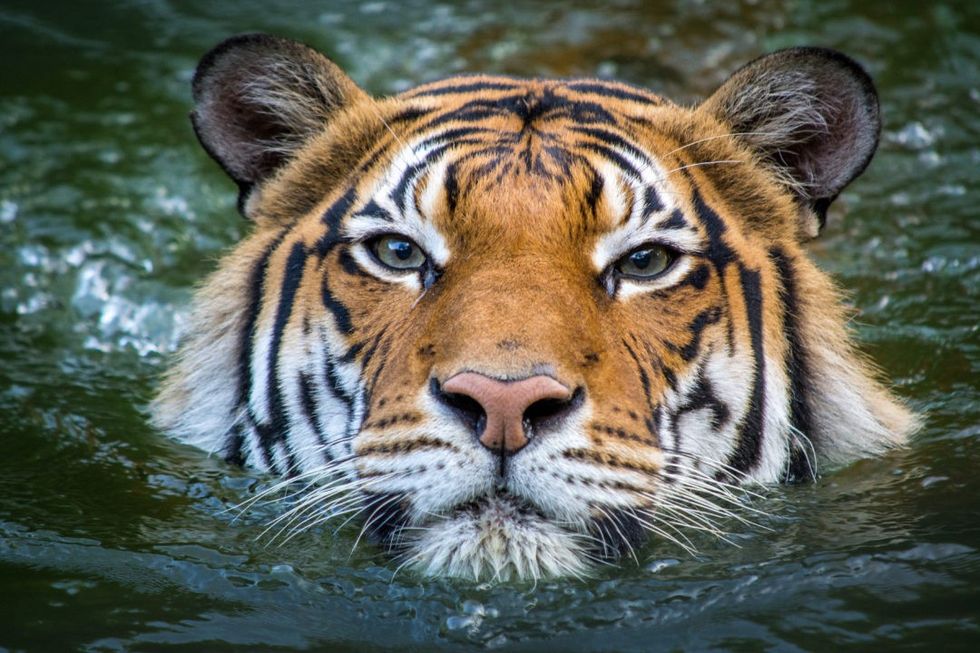
Houston Zoo has a mission and vision rooted in conservation and saving wildlife.
"We recognise that improperly disposed of plastics are a threat to several species," said Hodges. "We began a journey that we're actually still on, honestly, to challenge ourselves and our culinary and retail partner, SSA.”
“For us, this was a game changer once we took the plunge because it led us to take a broader look at purchasing and sustainability standards for products as a whole, and we established some internal policies that we would pass on to our vendors and hold ourselves to.”
How to get started?
“We've also infused this message and these efforts around single-use plastics and sustainable culinary experiences into not just our exhibits, but the built environment as a whole at the zoo.
Albaum shared advice for other organisations wanting to make a difference in this area:
“First, recognising that wanting to make changes in your supply chain can be daunting, and it can be very intimidating to start conversations with your vendors. But once you get started, the momentum builds itself.
"Starting is the hardest part, but once you get rolling, things build quickly.”
Hodges added: "One lesson is not to be afraid to challenge your operations. You can start with low-hanging fruit, and sometimes that's the easiest to take the plunge on. And sometimes it also happens to be the most impactful."
Starting is the hardest part, but once you get rolling, things build quickly.
“For us, it's easy to just connect it back to our mission. We know that people are at the zoo to see animals, and they are lovers of wildlife. So we can reinforce that as our mission and connect our sustainability efforts, whether it's around plastics or other areas of conservation, back to wildlife, and leverage that empathy connection."
Silence or Spin? A green marketeer’s guide to finding the right tone for authentic sustainability communication
Paul Randle, CEO and founder, Pickle Consulting, presented an outsider’s view of our industry. He considered some common marketing scenarios, such as how to describe ‘green products’, ways to speak effectively about green theme park initiatives, and how legislation, such as the European Union Green Claims Directive, will redefine marketing.
It's not just about communicating a green message. Sustainability, when done properly, fundamentally reorganises what your product is and what your proposition is.
"Marketers have this unique role in the organisation where they can be a conductor of performance," said Randle. "Maybe you can think of ways to build new propositions that achieve both a revenue goal and an environmental sustainability goal?"
"What's the value proposition we've always had? How do you weave into that sustainability, not bolt it on the side?"
"I think as soon as you release yourself from that almost constraint of ESG compliance thinking around net zero and saying how could this make this a better, more exciting proposition, then you get into a more exciting place where marketing and sustainability can come together."
"One of the failings that I'd say the sustainability industry or sustainability movements had is that it's excelled at terrifying people. It's the world's ending, oh my god, and that was brilliant at raising awareness, and we needed to raise awareness.
What it's been proven not to be very good at is motivating change."
Finding your green voice – how to communicate sustainable action without greenwashing
Una de Boer, chief marketing officer at WhiteWater, gave insights into effective, good, green marketing at greenloop 2025. This session examined examples of effective marketing of climate action by visitor attractions.
Greenwashing is when companies make false or misleading claims to create the impression that they are more environmentally friendly than they actually are.
"The reason people are scared about talking about sustainability is the number of companies that have been called out about this. And I think that's not a bad thing. Having that accountability will hold companies to a higher standard in how they're talking."
"That's important because consumers need to believe what we say, and the problem with greenwashing is that consumers are becoming cynical and not believing what we say because they can't trust us."
In terms of branding, your brand is who you are as an organisation, said de Boer: "Your brand isn't what you do. It isn't how you look. It is who you are. And either sustainability is included within the way you operate and in your philosophy, or it's not."
Doing something is better than doing nothing
So, how does a company like Whitewater, which makes fibreglass, something that is not sustainable, talk about sustainability?
Doing something is better than doing nothing, and making sure that that is something you're proud of.
"It's about how we're trying to lessen the impact we're having. Knowing that this is something that our business creates and we need to address it. People want to have water parks and have fun. It doesn't mean you can't also drive sustainability and a dialogue about everyone taking small steps to be more sustainable.
"Doing something is better than doing nothing, and making sure that that is something you're proud of.
"If you don't have internal expertise, and let's be honest, few of us do, we're not running businesses because we're sustainability experts, we're trying to do that as well as run our business, there are a ton of consultants out there who can help you, who can point you in the right direction, who can get you started and set up."
"The critical bit of not greenwashing is about that measurement side, saying we're going to show you how we're measuring this. We're not just going to put some fluffy pictures and celebrate Earth Day; it has to be based on what we're doing, what we're learning, and how we're tracking it."
Hearts, Minds, and Habits: Rethinking Sustainability Engagement in Attractions
In this final greenloop 2025 session, we heard from Rose Hendricks,executive director, ASTC Seeding Action; Lila Higgins, senior manager, community science, Natural History Museum of Los Angeles County; and Aileen Tennant, regional representative for Europe and the Middle East, International Zoo Educators Association (IZE).
Hendricks began by introducing Seeding Action, a programme which seeks to accelerate and support science centres, museums, and other public engagement organisations in promoting a culture of hope and action for planetary health.
"We're catalysing and supporting science centres, museums and other public engagement organisations to cultivate a culture of hope and action to improve community and planetary health. For us, a culture of hope and action means more people taking and embodying action so that it's infused through all of society."
"Planetary health challenges are here and now. The health of the planet affects the things we care about. A healthier world as possible. And we all have roles to play in bringing about a healthy planet."
Seeding Action provides scaffolding to support members in building capacity. "We support relationship building across organisations within and beyond the network. We offer resources and information, including funding and training.
For example, one publicly available resource on its website is last year's annual report, which distils insights from Seeding Action's first year and provides a wide range of examples of different types of efforts. It also has a forthcoming guide on framing planetary health, which distils evidence-based considerations and recommendations for discussing and communicating various planetary health topics.
Snerch!
Higgins then spoke about community science and how it can spark hope, focusing on the Natural History Museum of Los Angeles County 's iNaturalist projects.
“So, we have a project called Snail Search, which we shortened to search, which is a very fun word to say and has brought me joy at work and many of our constituents. We've literally had people say, 'We love the name. We love saying it.' And that little burst of joy paired with the idea that they're collecting real scientific data for scientists to use, and it's open source, so anyone can use it, has been compelling.”
It's also a photo competition. "That's a motivator for some people. People love taking pictures of nature. We've been able to capitalise on that.
They also spoke about the City Nature Challenge.
"We started in 2016 with LA versus San Francisco, which city can find the most nature using iNaturalist. And then it's grown since then. So that next year, in 2017, it was 16 cities in the United States. Then it went to 58 cities around the world. Last year, in 2024, there were 690 cities worldwide. And then this year we had 669 cities.
"In 10 years of the challenge, we've collected almost 13 million observations of 113 species around the world, with 363,000 people taking part."
“Coming back to snerch, we were able to find this rare snail in the Southern California area. It's critically imperilled. And this is a baby. So that means that the population is reproducing and is doing well in this location”
Zoos and aquariums have a unique platform
Finally, Tennant introduced IZE, a global network of conservation educators connected through a passion for wildlife and a desire to work with society to save biodiversity. "While our members work in zoos, wildlife parks, and aquariums, caring for wildlife, we focus as educators on the people and how we can make a positive impact for wildlife and wild places."
Zoos, wildlife parks, and aquariums have a unique platform to connect hearts, heads and minds to the drivers of biodiversity loss.
"We are trying to multiply the impact of education on zoos and aquariums by building capacity amongst our members and fostering behavioural change campaigns worldwide. We have over 700 members across more than 220 organisations in 52 countries.
"Zoos, wildlife parks, and aquariums have a unique platform to connect hearts, heads and minds to the drivers of biodiversity loss."
IZE members and their campaigns encourage people to adopt more sustainable lifestyles, make better decisions to support sustainability and to be as sustainable as possible without going OTT in their lives.
"For example, Zoos Victoria in Australia did a big behaviour change campaign about people using balloons. Initially, this was a very strong culture of people having balloons in the country, and they switched up that behaviour and asked people to blow bubbles."
Thank you! greenloop next steps
Thanks to everyone who attended greenloop 2025. Over the last five years, we have achieved what we set out to do: start the conversation in the industry, create a space for others to confidently discuss the climate crisis, and highlight innovative climate action.
Having achieved that, we will now take some time to review the comments from our attendees and consider what's next for greenloop. How can we be most useful? Let us know your thoughts and find out more by joining our LinkedIn group.
greenloop 2025 is available on demand (attendees can get a free access code - please check your email or contact events@blooloop.com).
Catch up on greenloop 2025
hereAnd finally, we calculate the carbon footprint of greenloop and include it in our overall calculation for blooloop each year. Find out more here. We have donated 20% of our ticketing income from the event to Solar Aid.
Top image courtesy of Houston Zoo
Charlotte Coates is blooloop's editor. She is from Brighton, UK and previously worked as a librarian. She has a strong interest in arts, culture and information and graduated from the University of Sussex with a degree in English Literature. Charlotte can usually be found either with her head in a book or planning her next travel adventure.


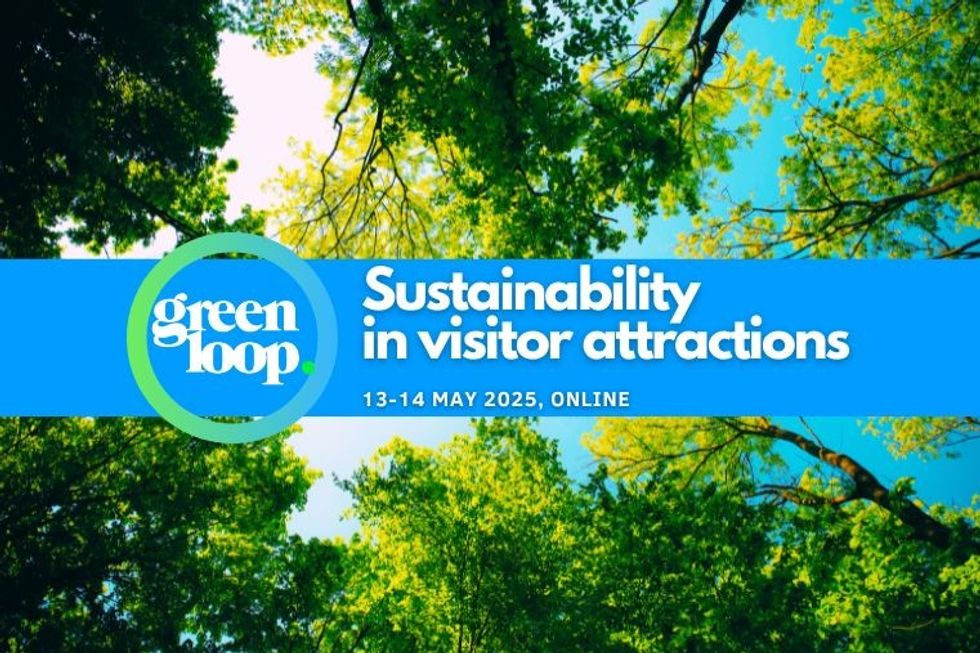





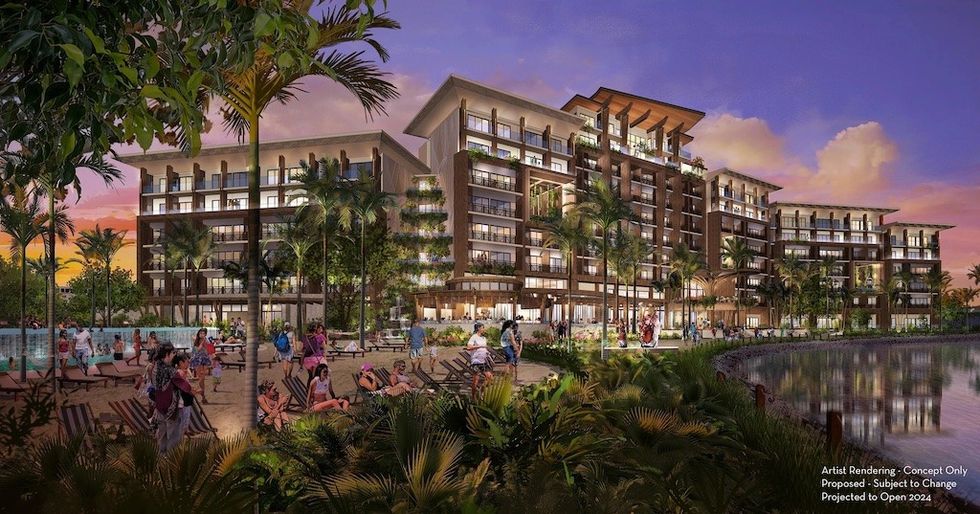
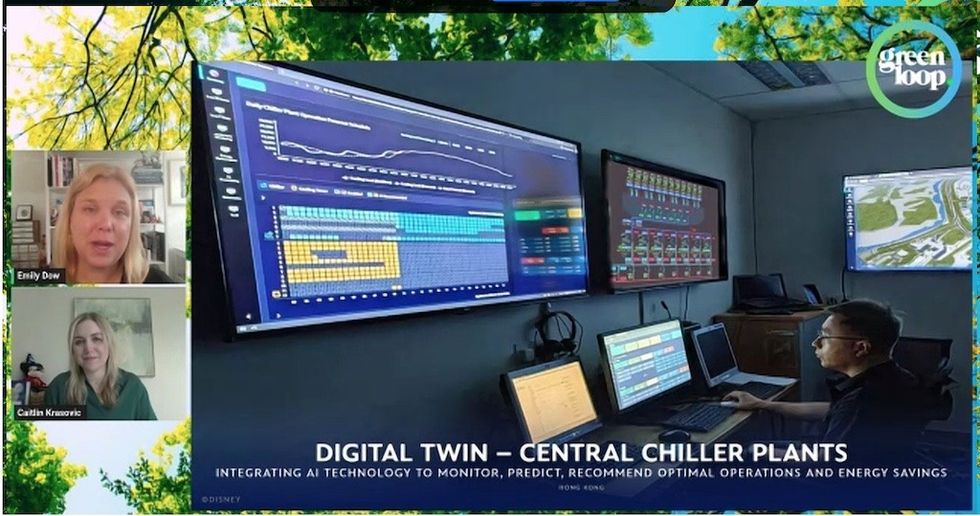

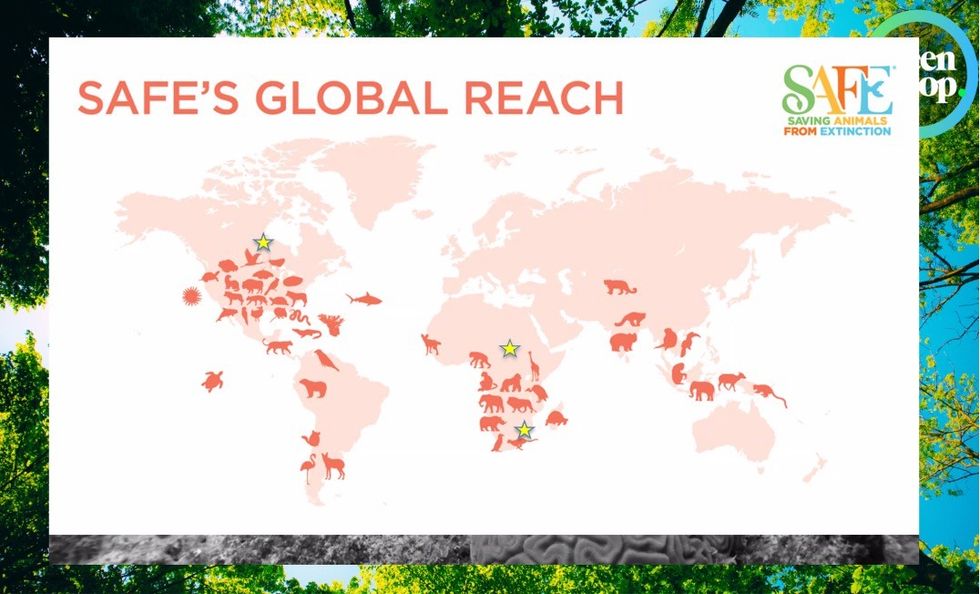
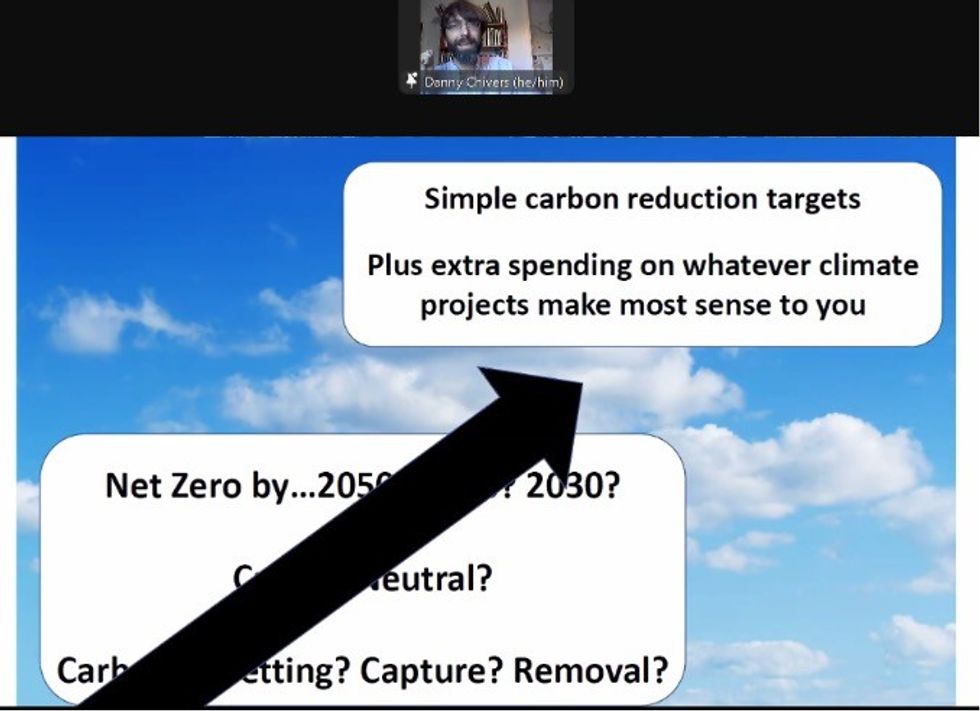
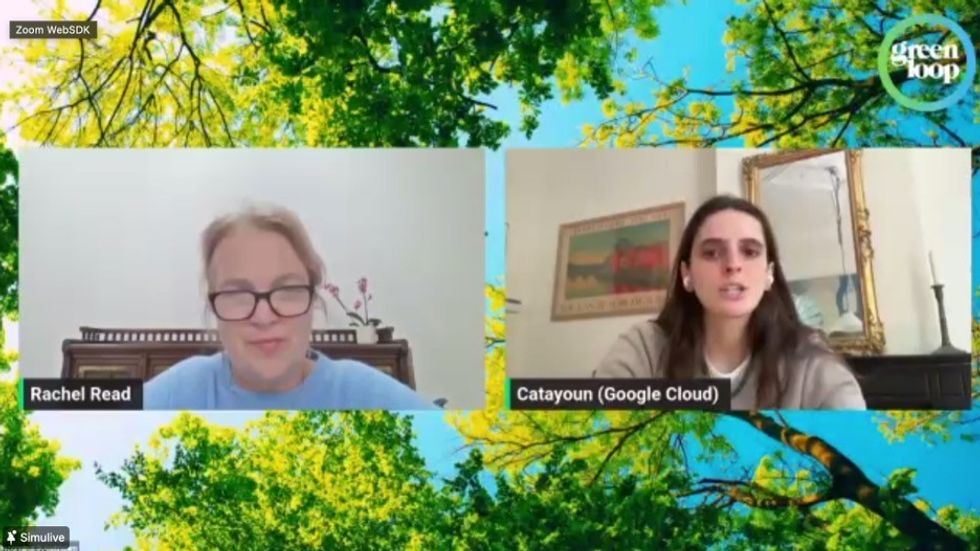
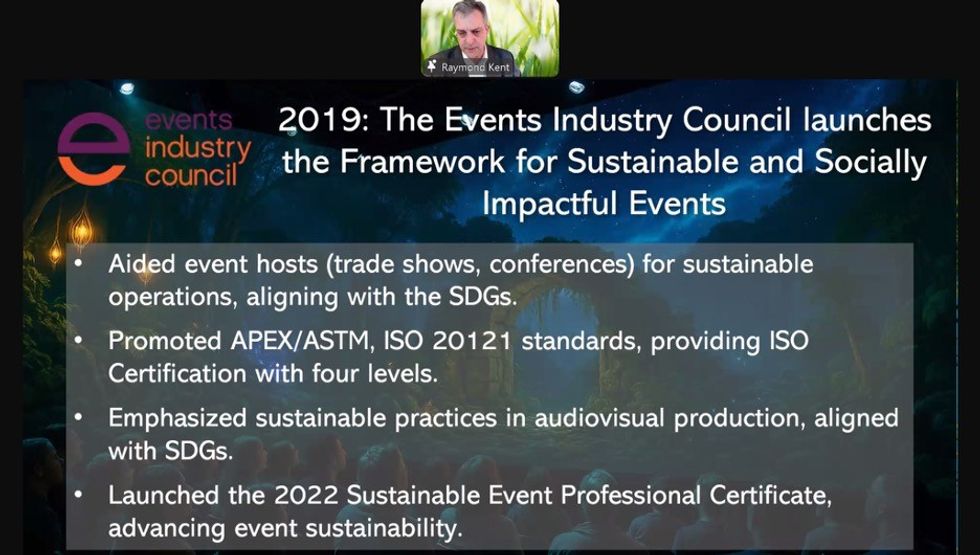
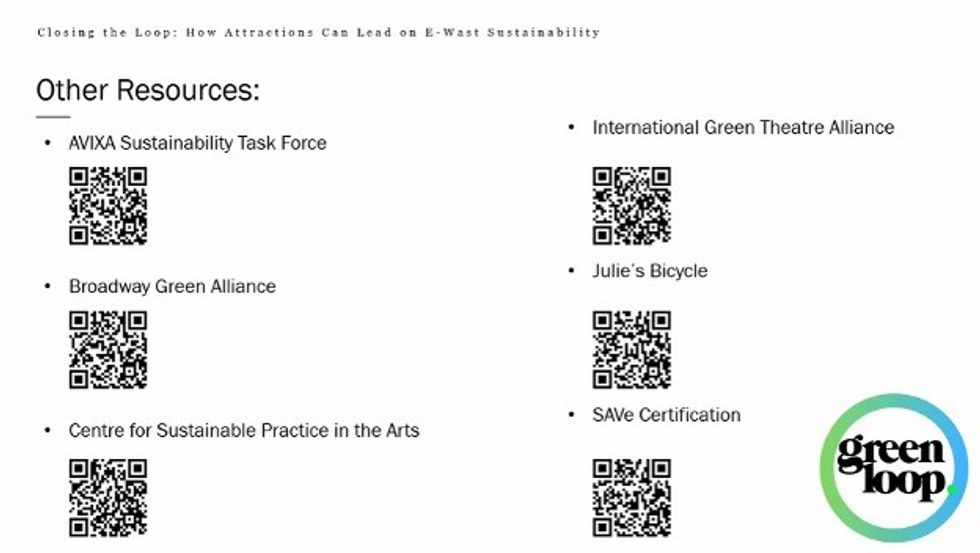
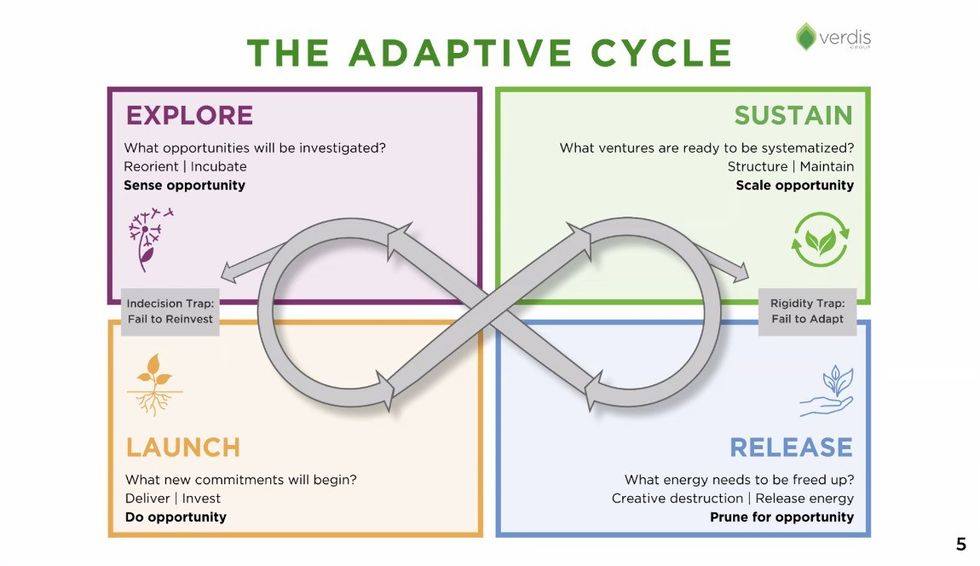
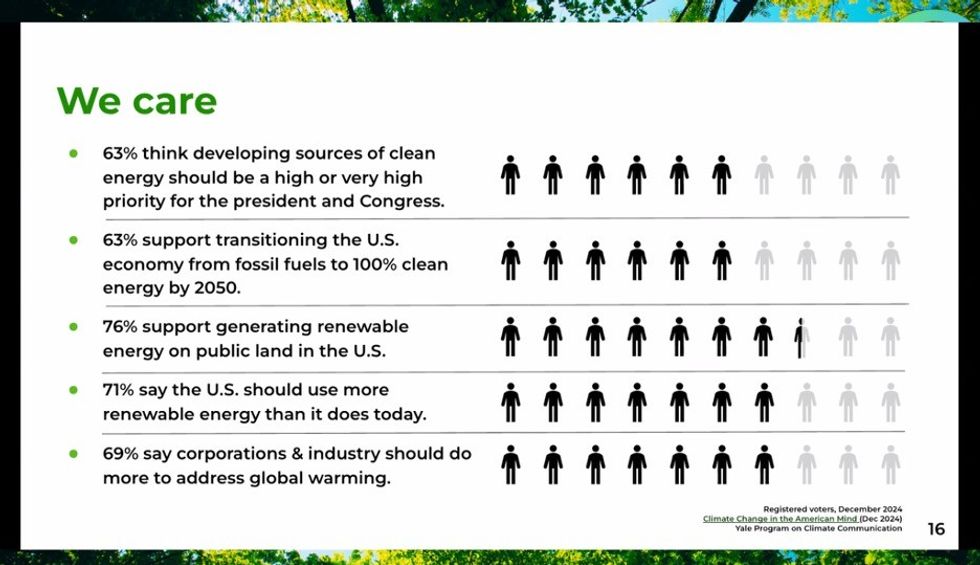
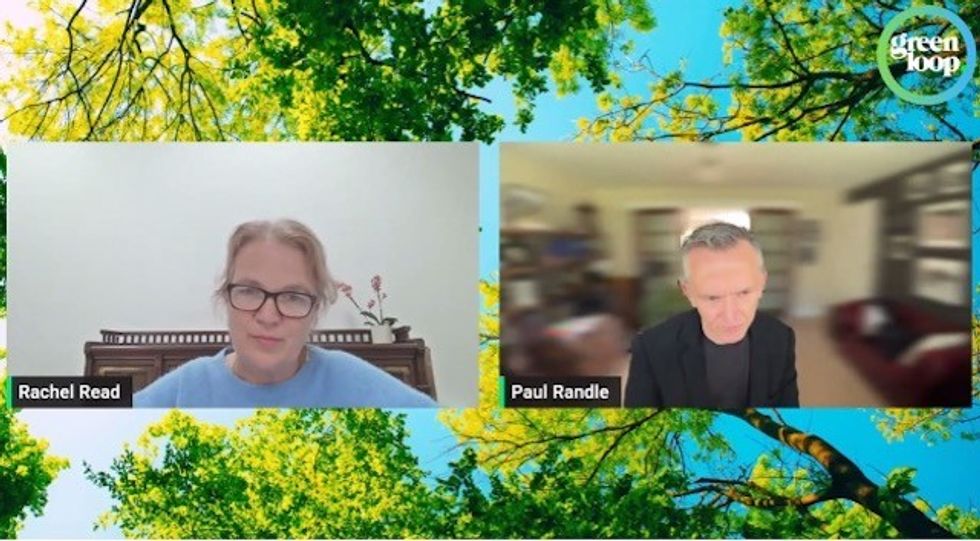
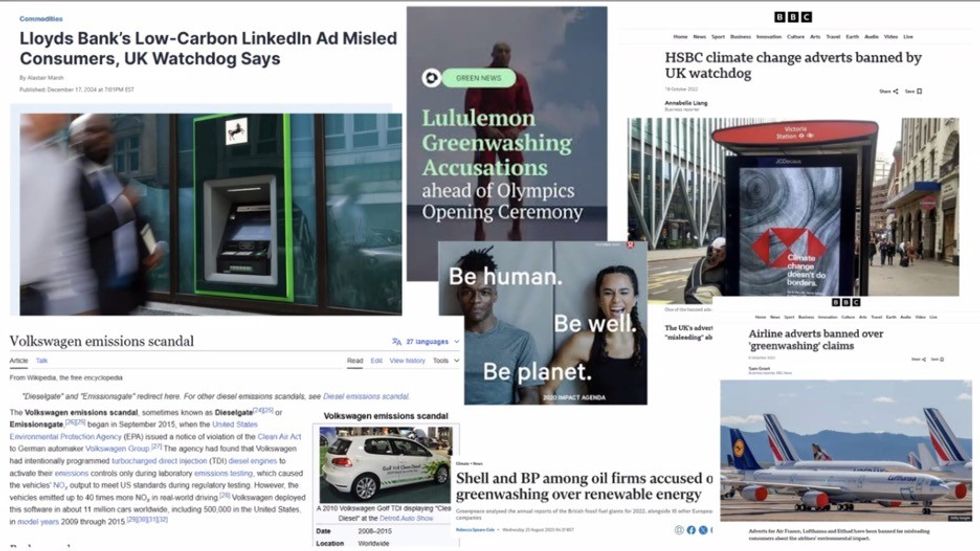
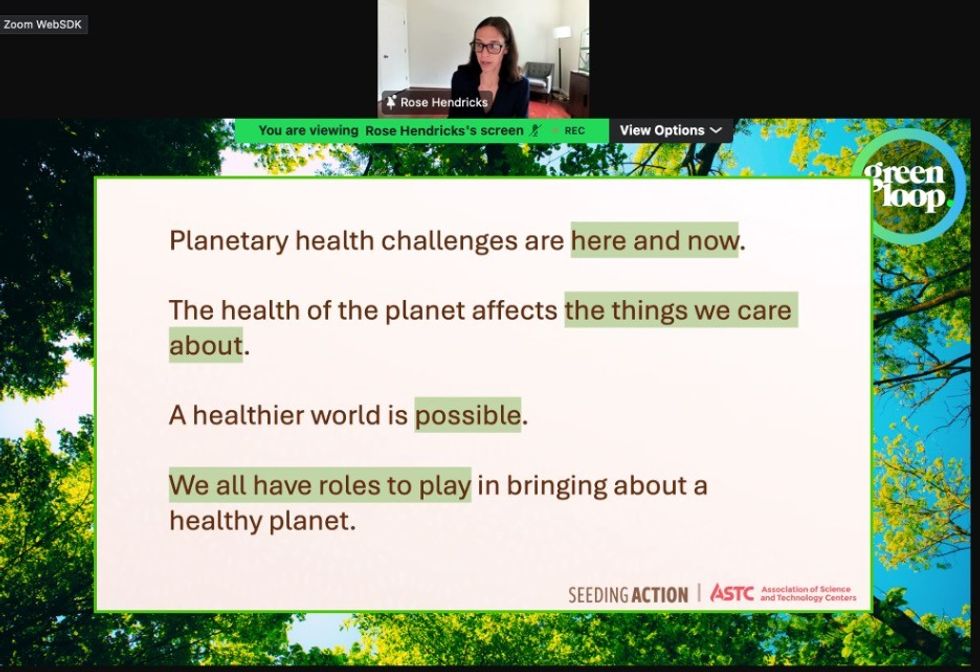
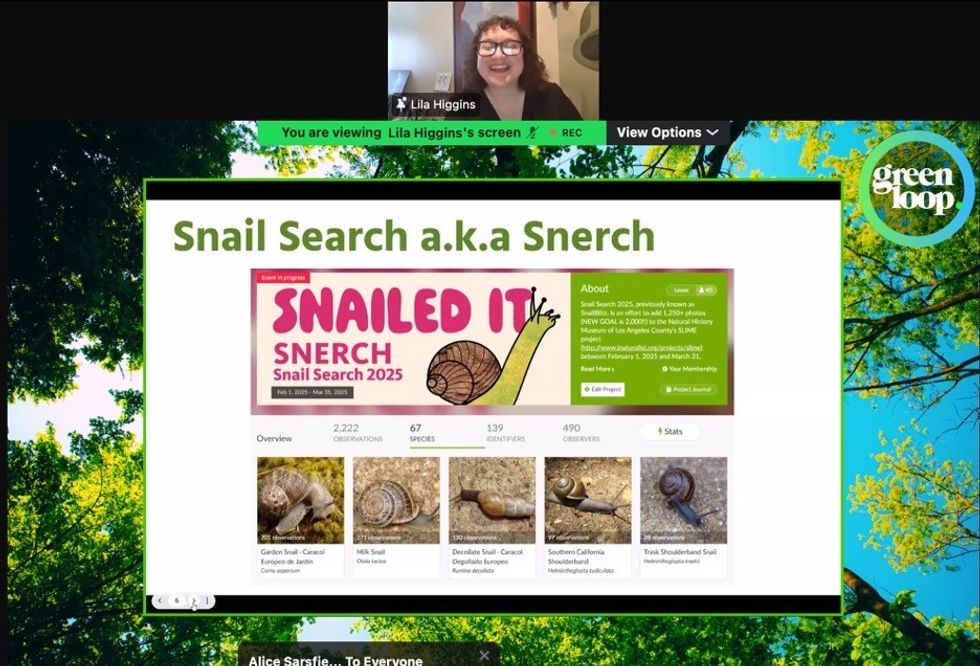
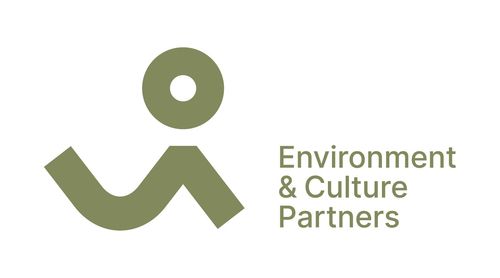











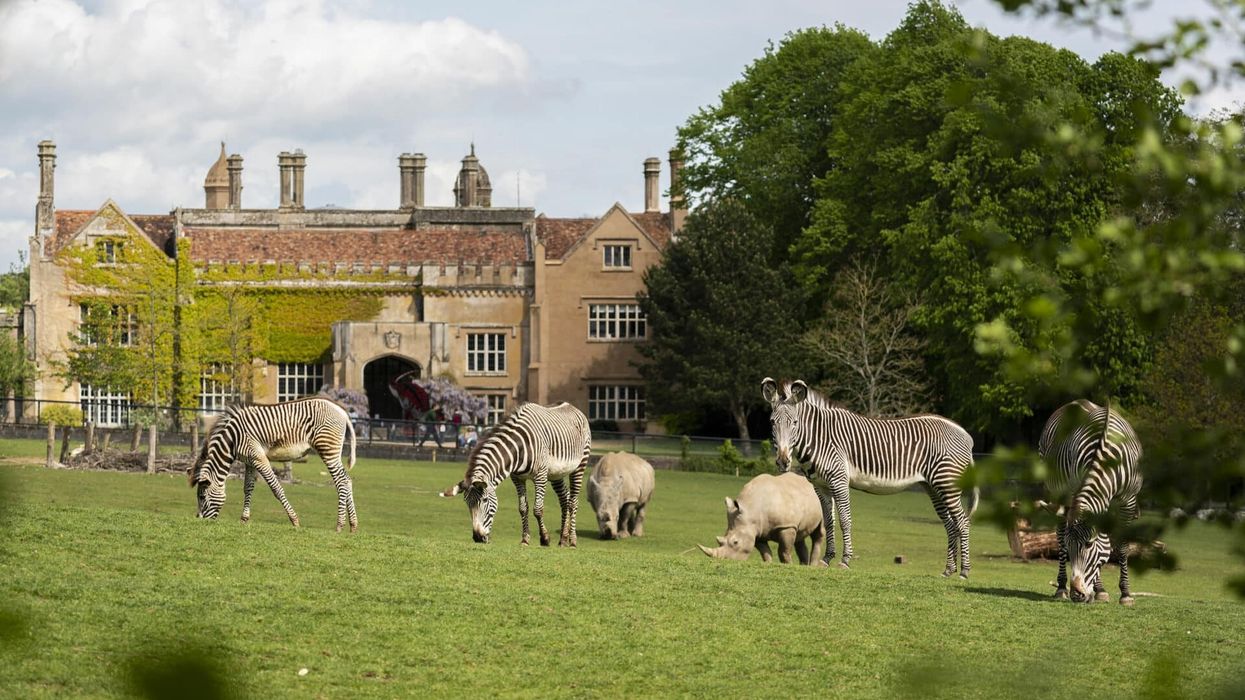
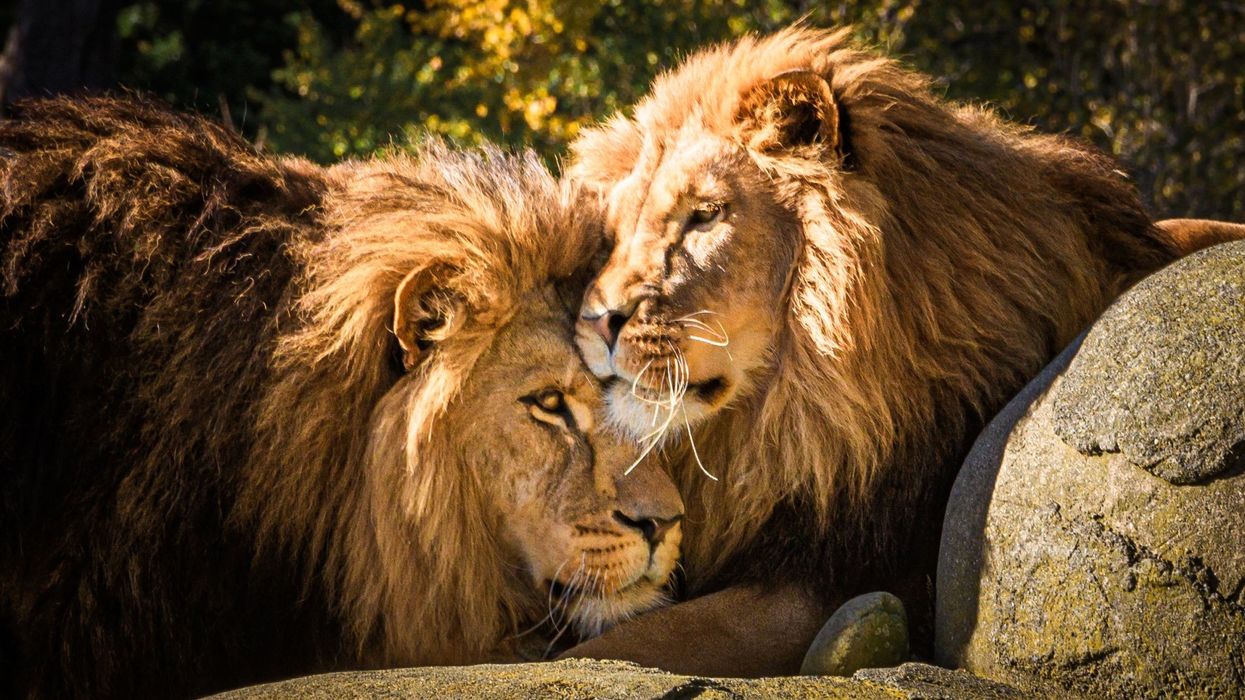

 Andrew Thomas, Jason Aldous and Rik Athorne
Andrew Thomas, Jason Aldous and Rik Athorne
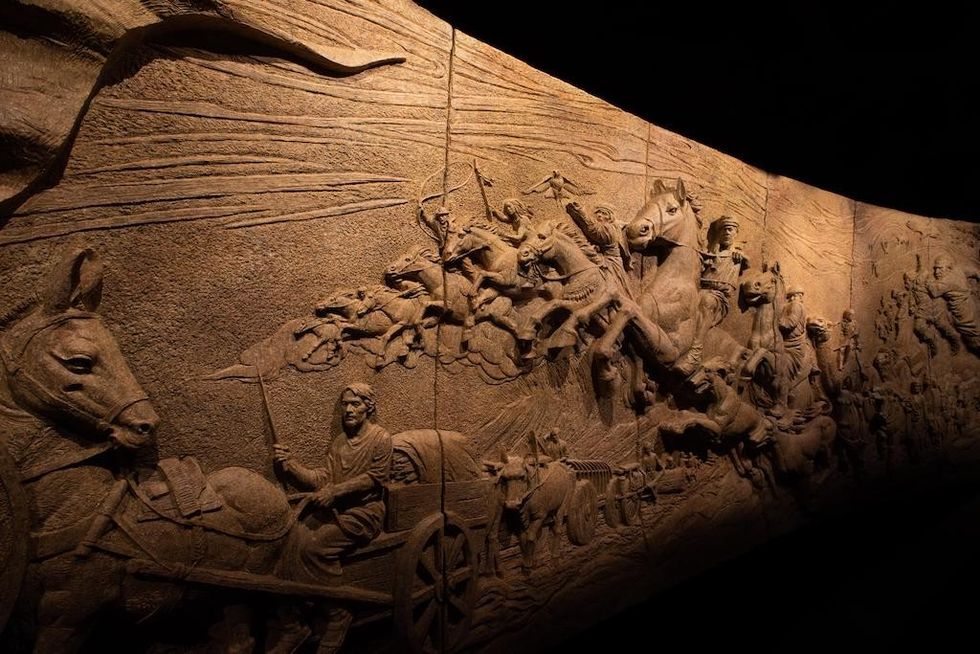
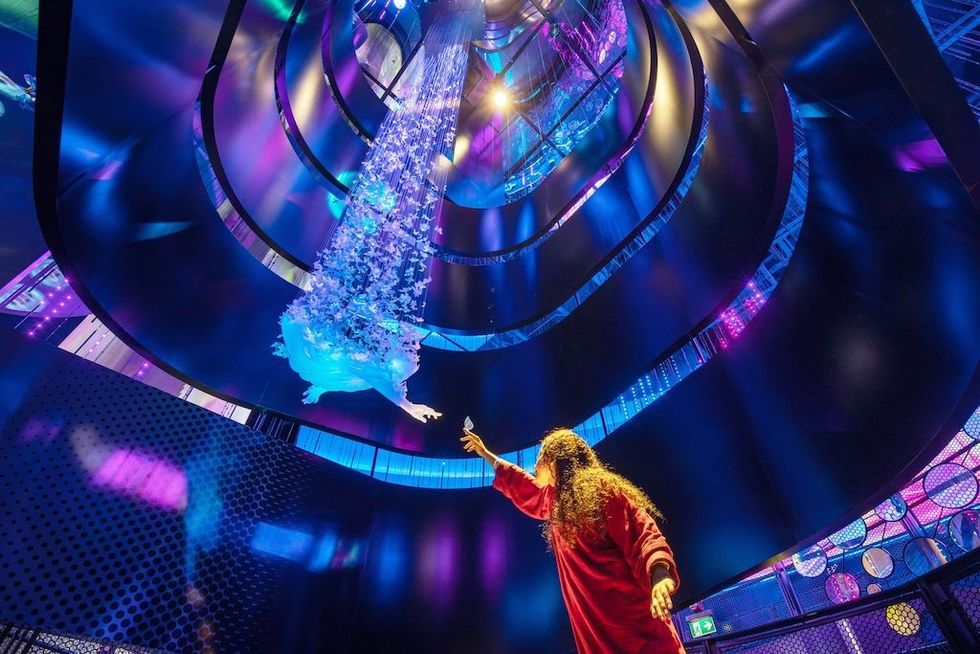




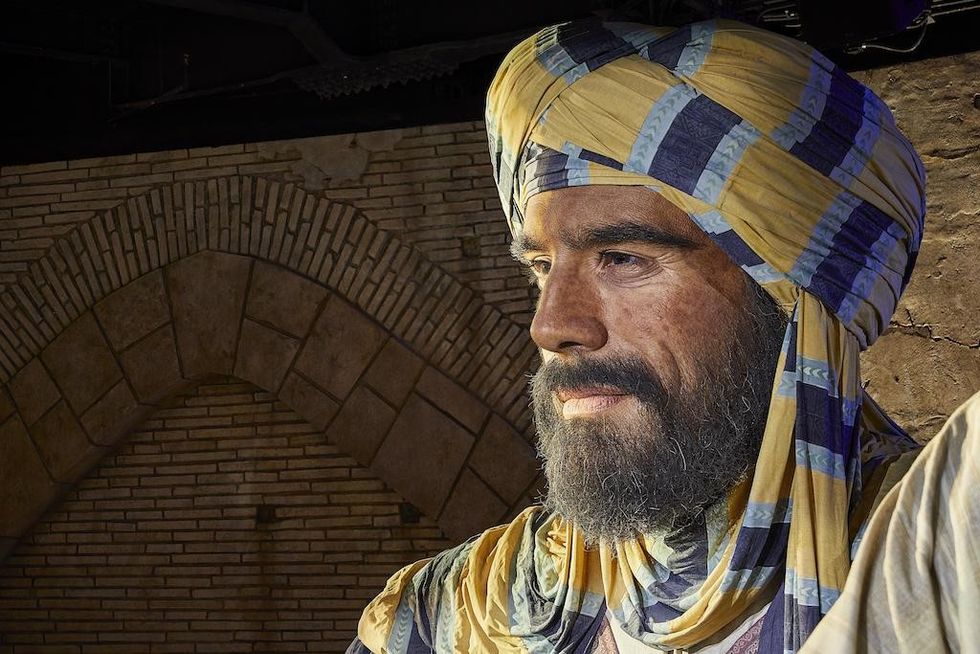


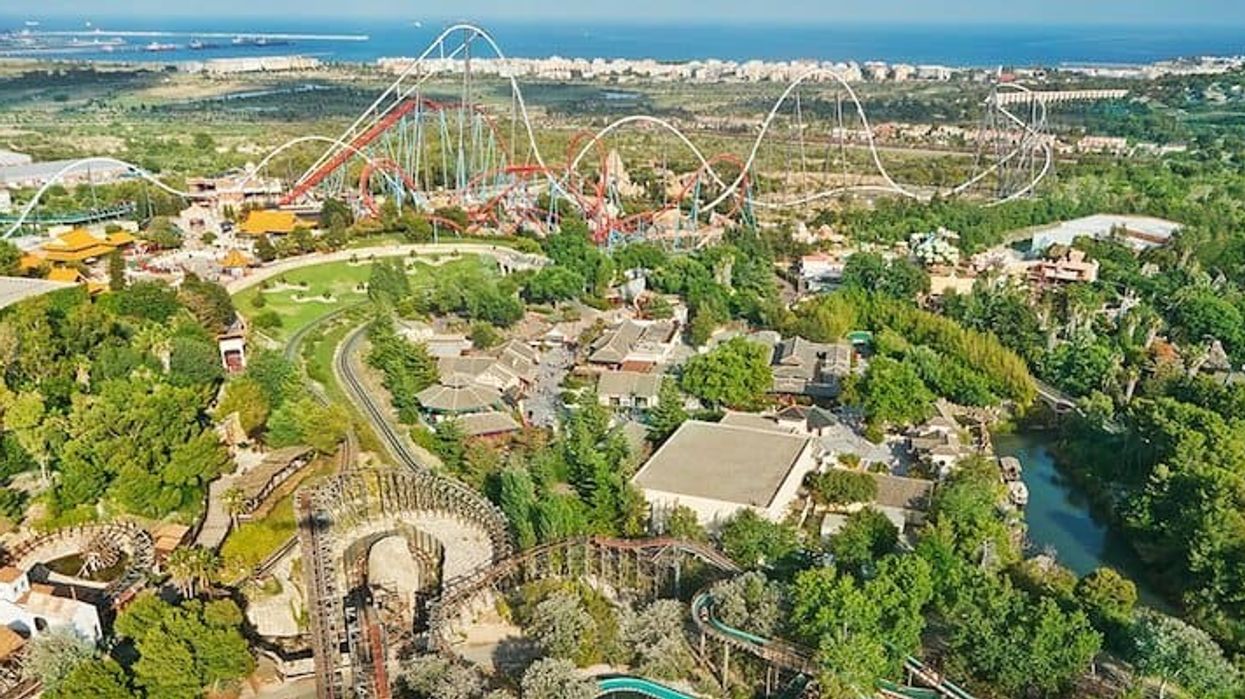
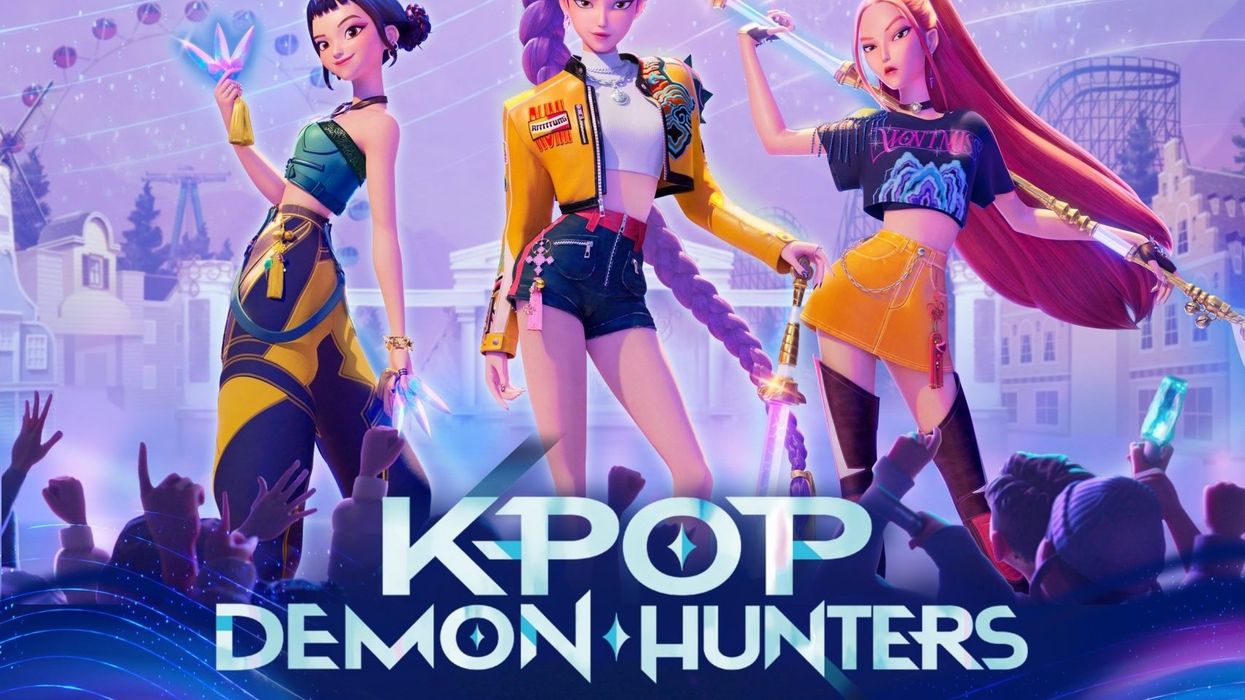


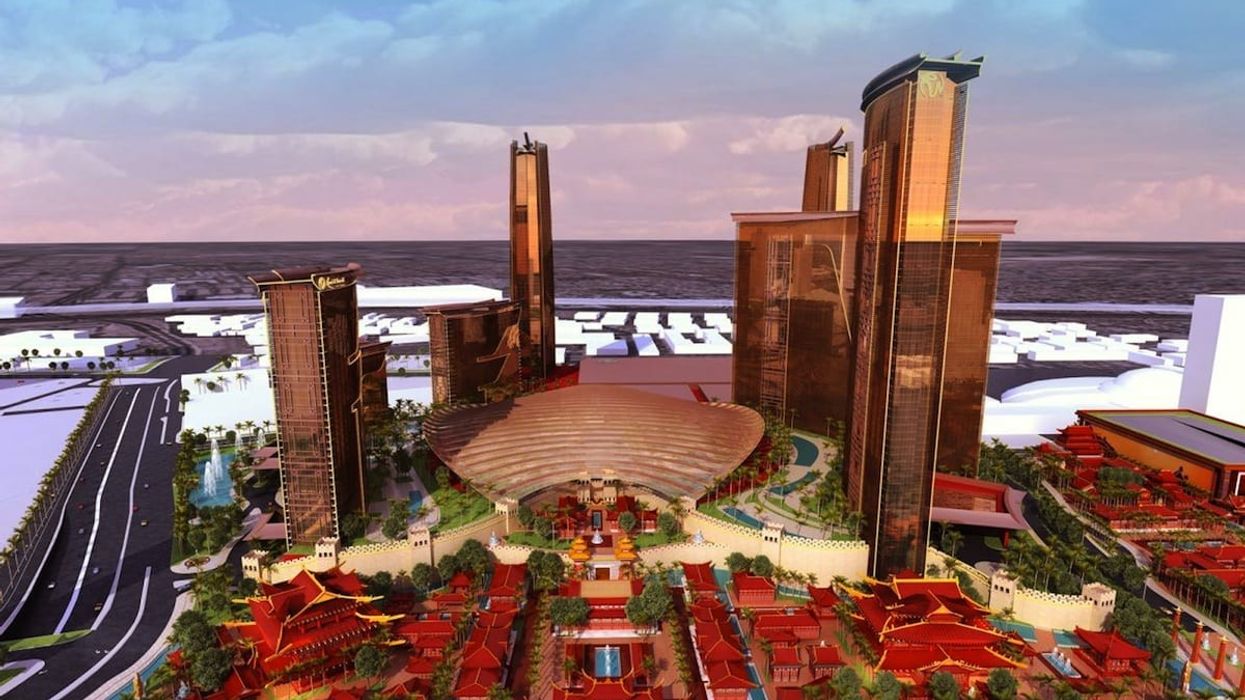
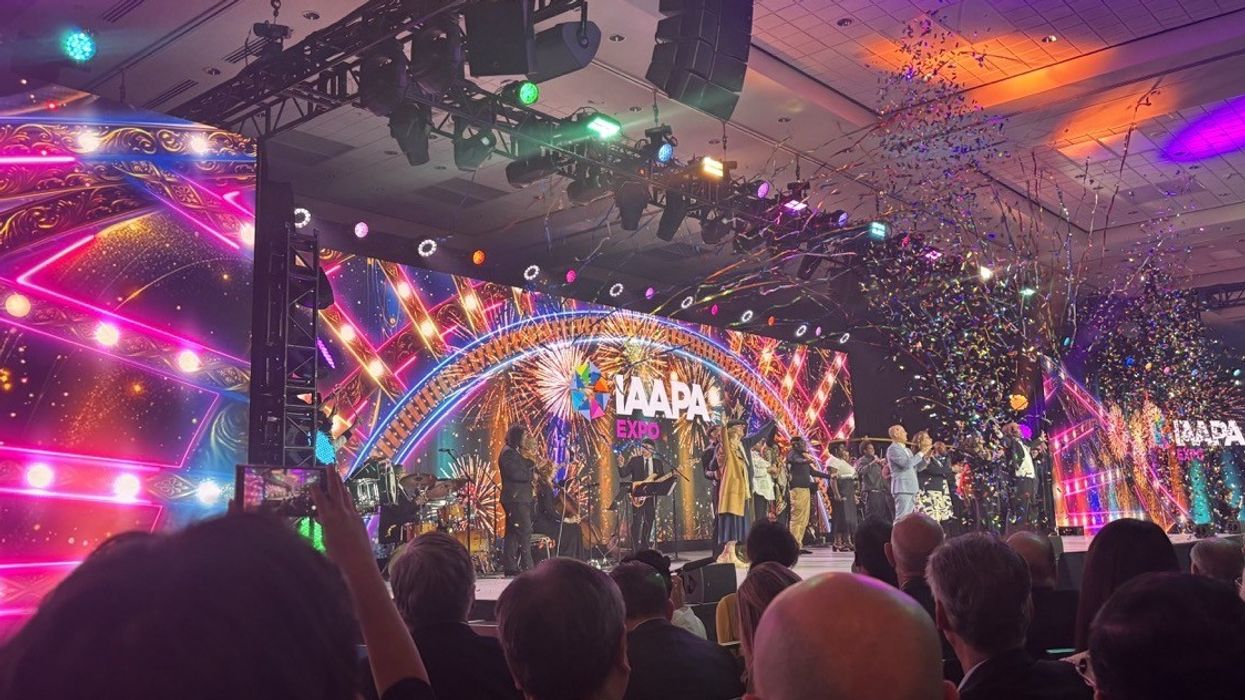
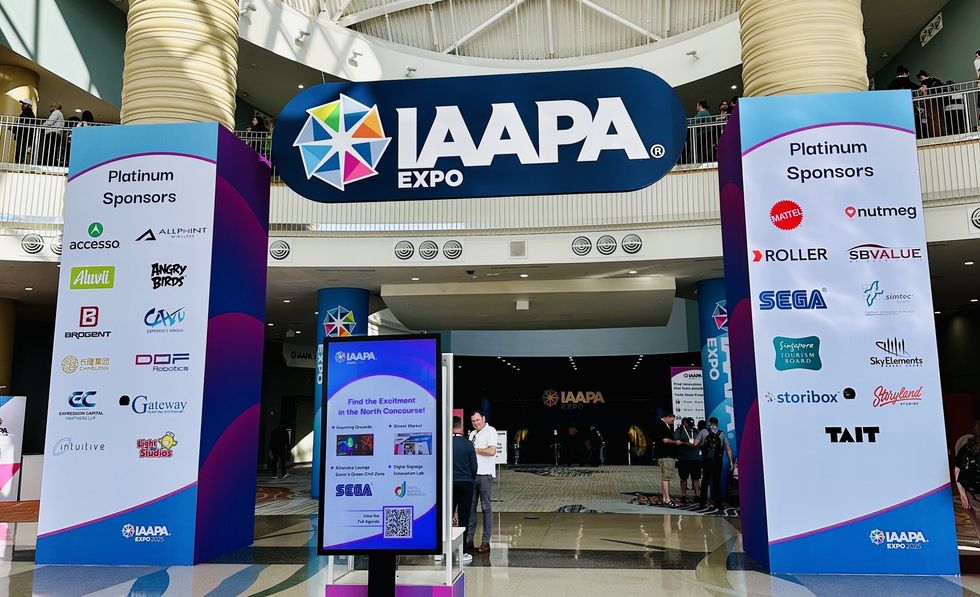
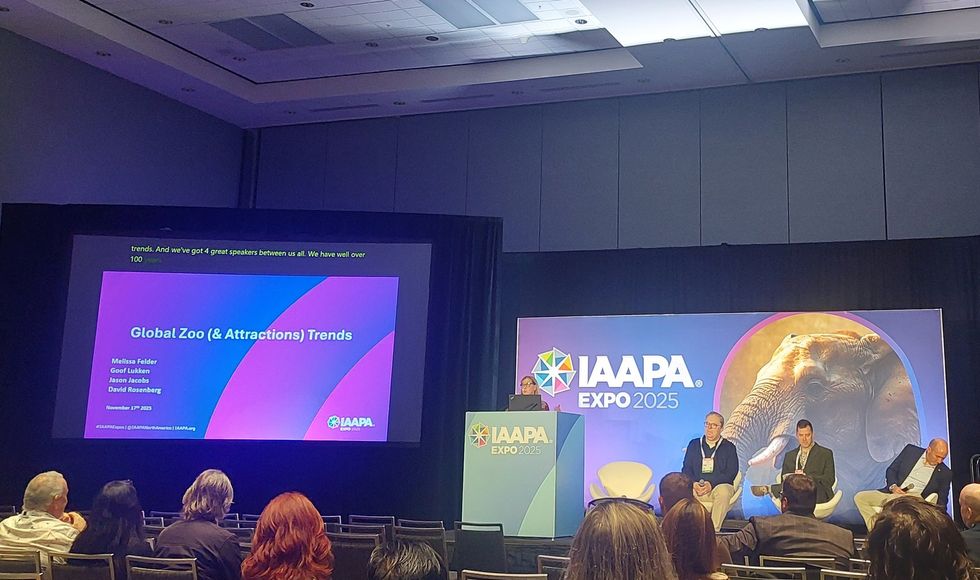
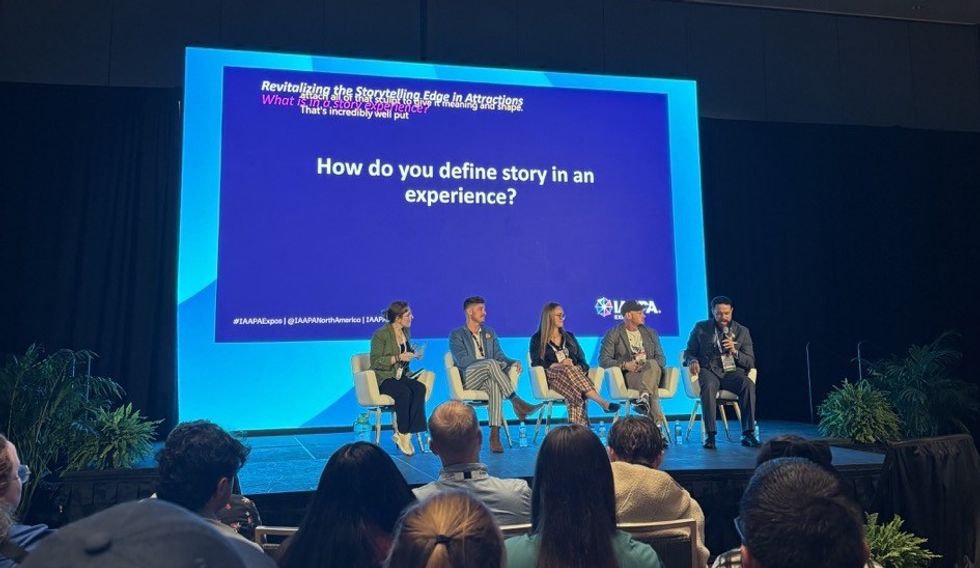
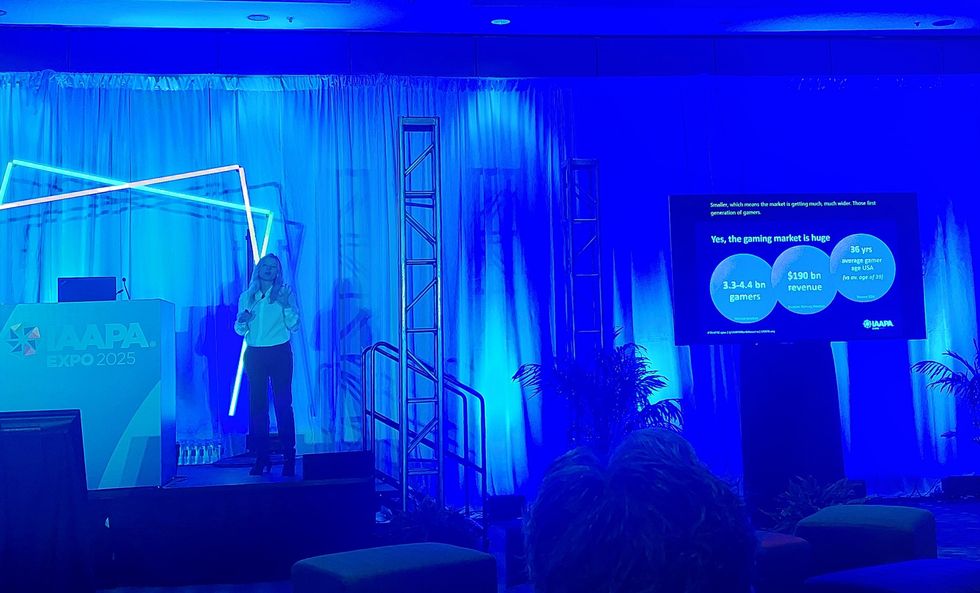
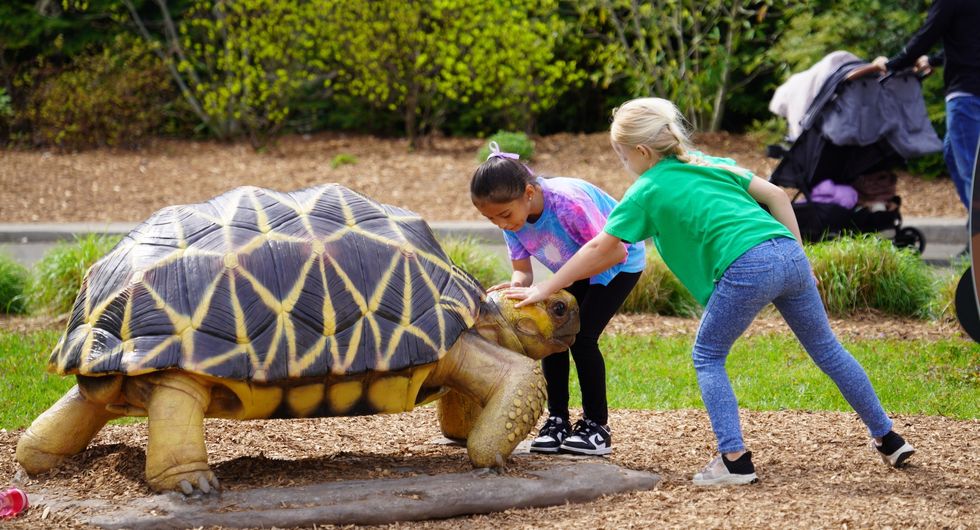 Detroit Zoo
Detroit Zoo 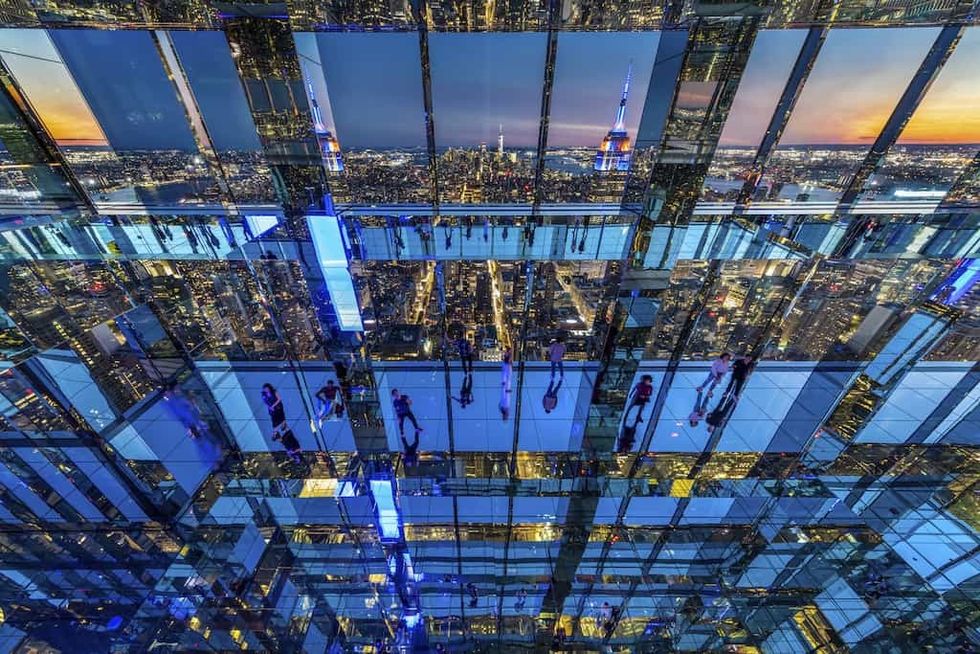 SUMMIT One Vanderbilt
SUMMIT One Vanderbilt  AURA at Grace Cathedral
AURA at Grace Cathedral 
 Cosm, LA
Cosm, LA 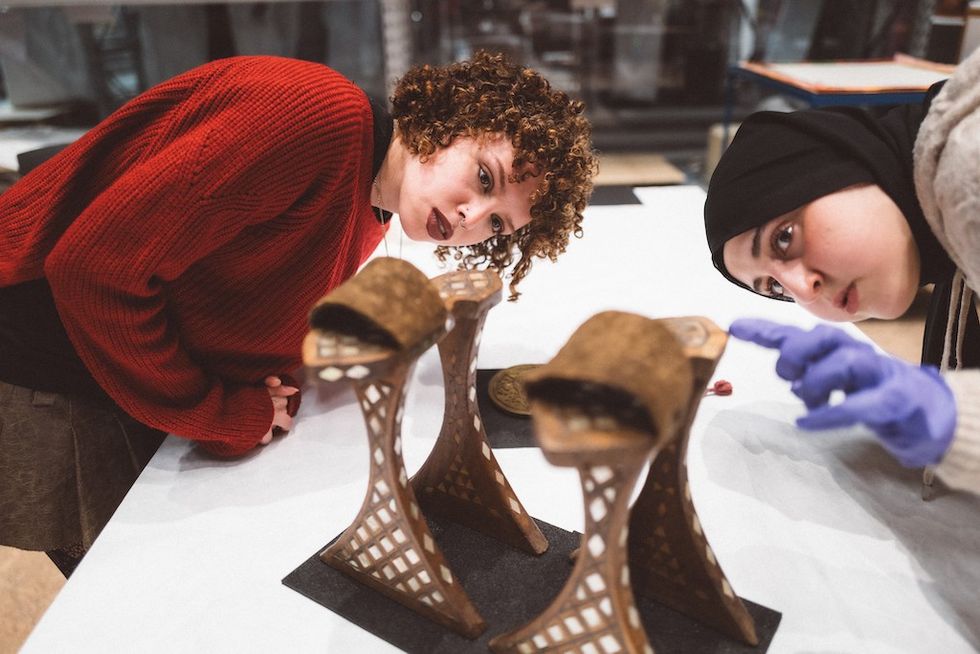 Order an Object appointment at V&A East Storehouse. Image by Bet Bettencourt for V&A, Object pictured - A pair of qabqab, made 1800-1880, Egypt
Order an Object appointment at V&A East Storehouse. Image by Bet Bettencourt for V&A, Object pictured - A pair of qabqab, made 1800-1880, Egypt  CONDUCTR - The Arena from Game Volt
CONDUCTR - The Arena from Game Volt 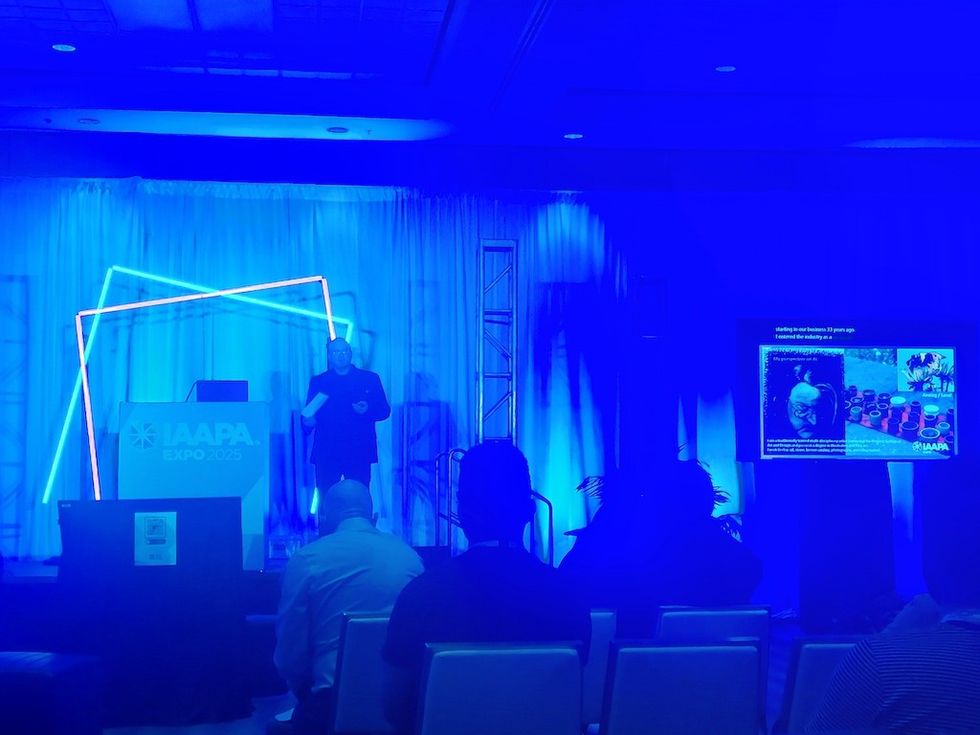
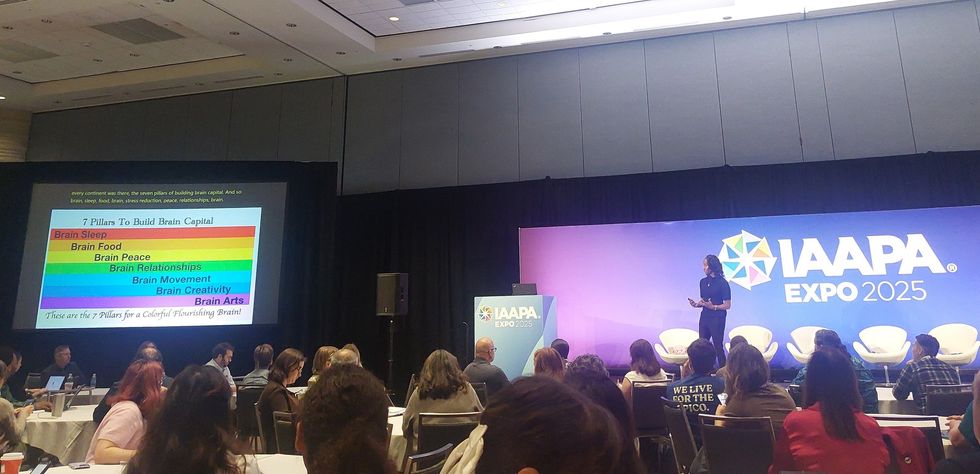
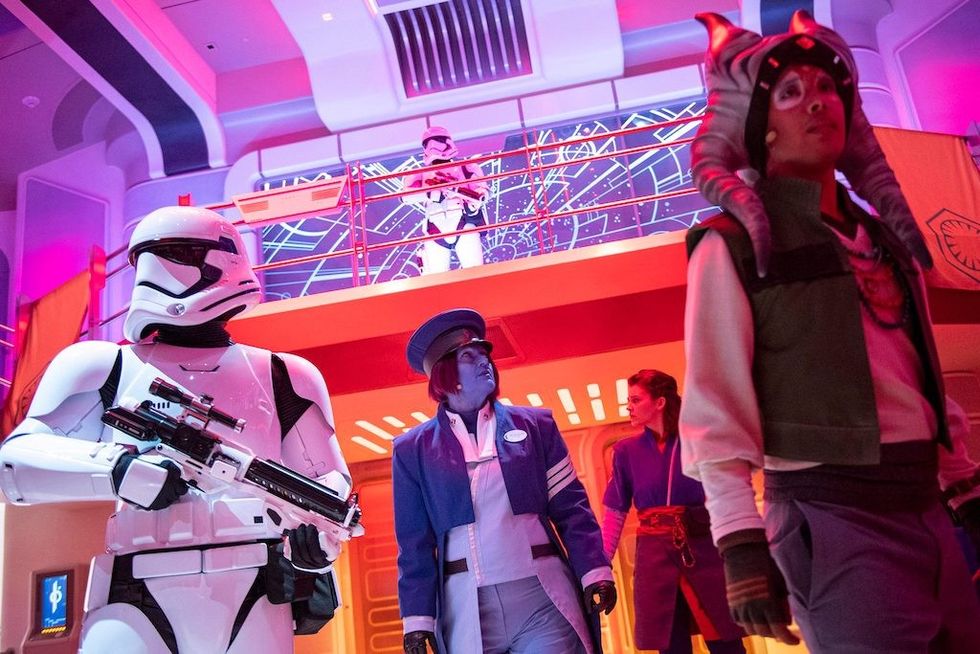 Star Wars: Galactic Starcruiser
Star Wars: Galactic Starcruiser 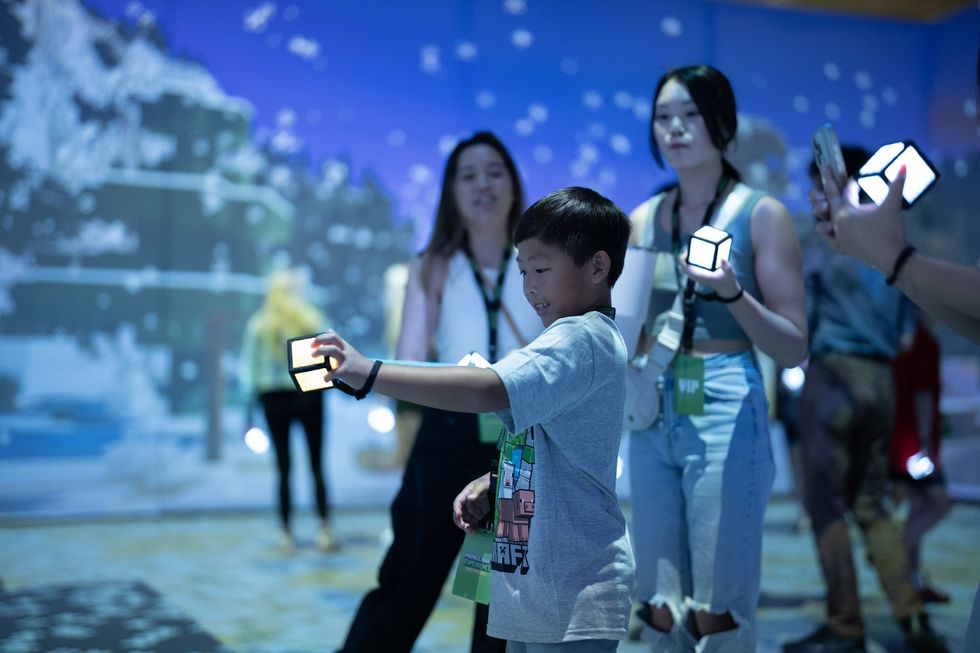 Minecraft interactive experience
Minecraft interactive experience 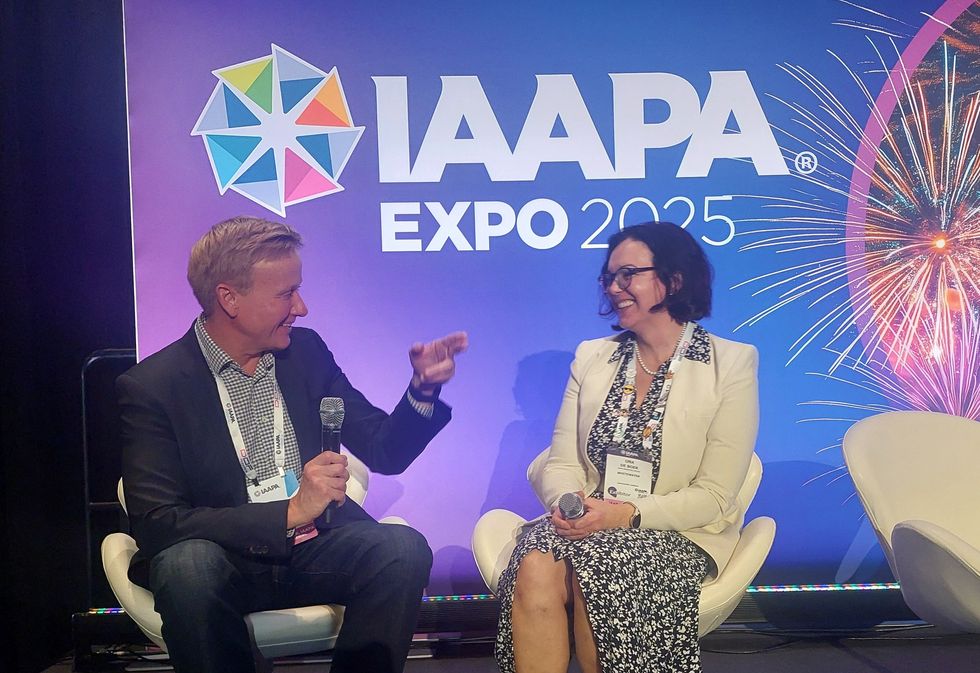

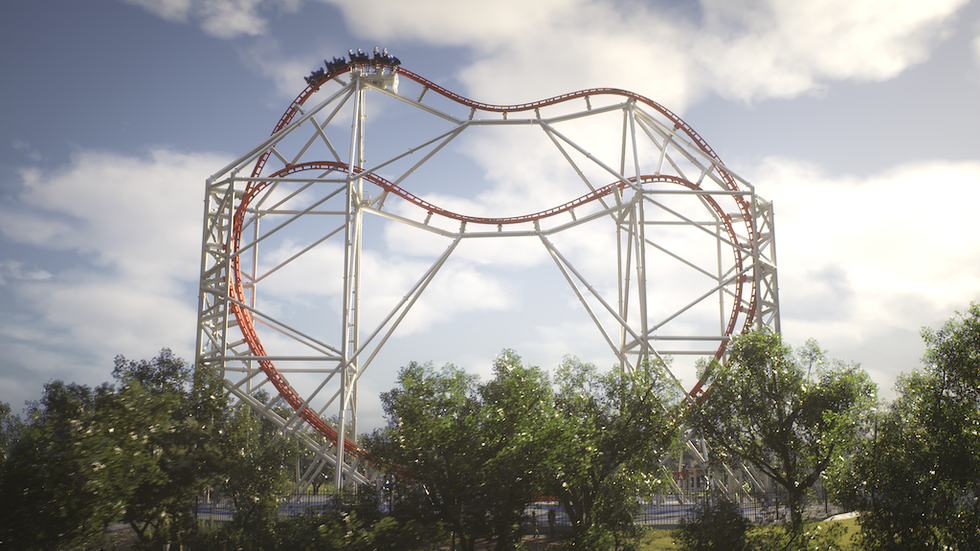

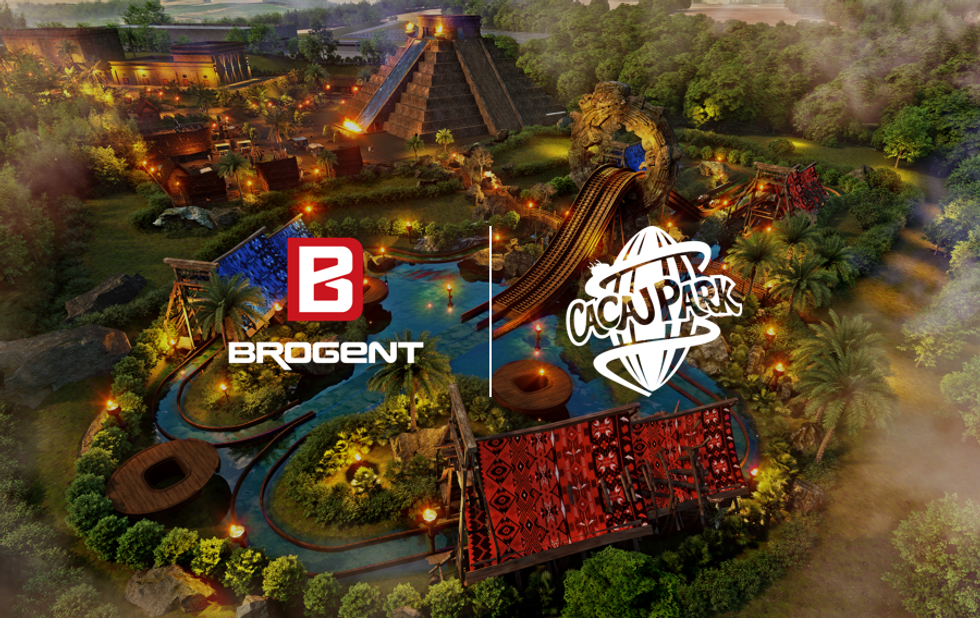

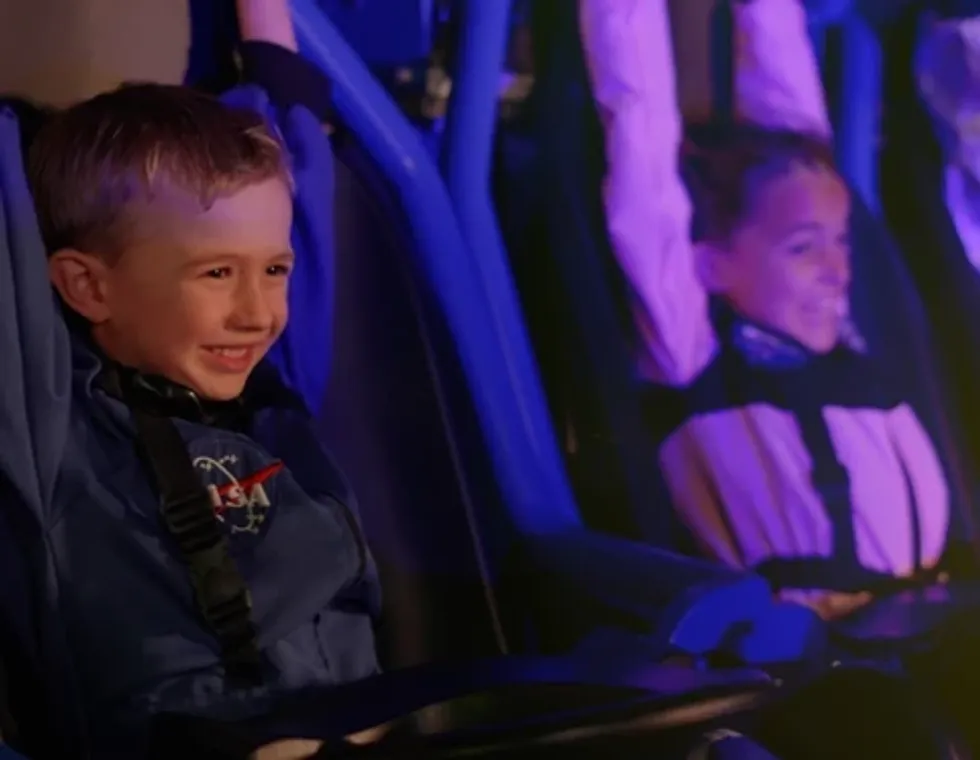
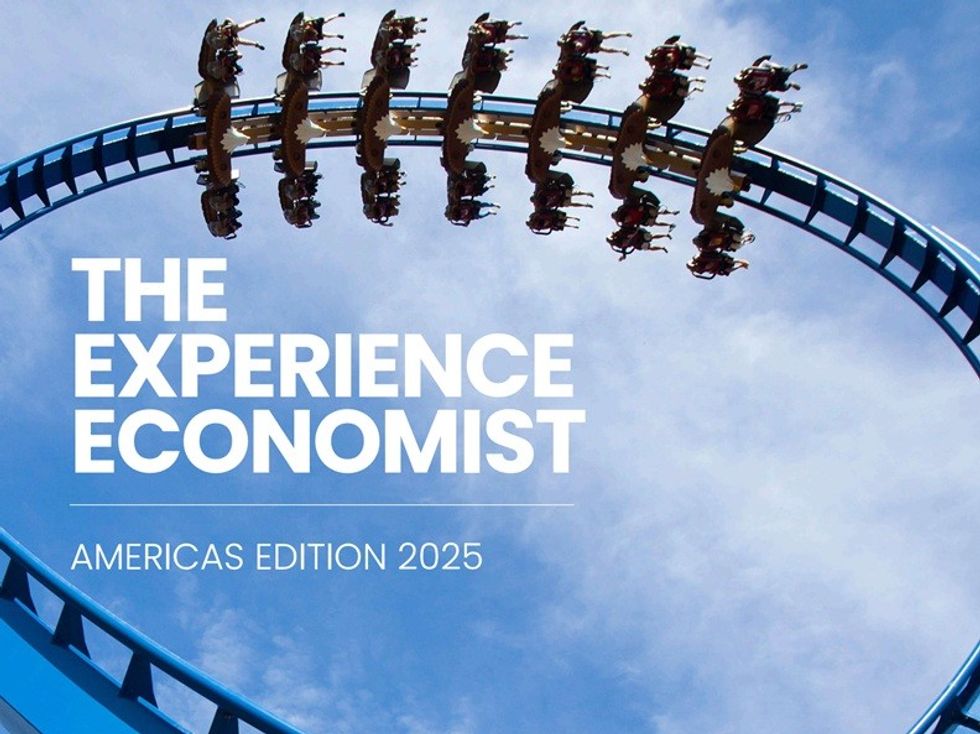
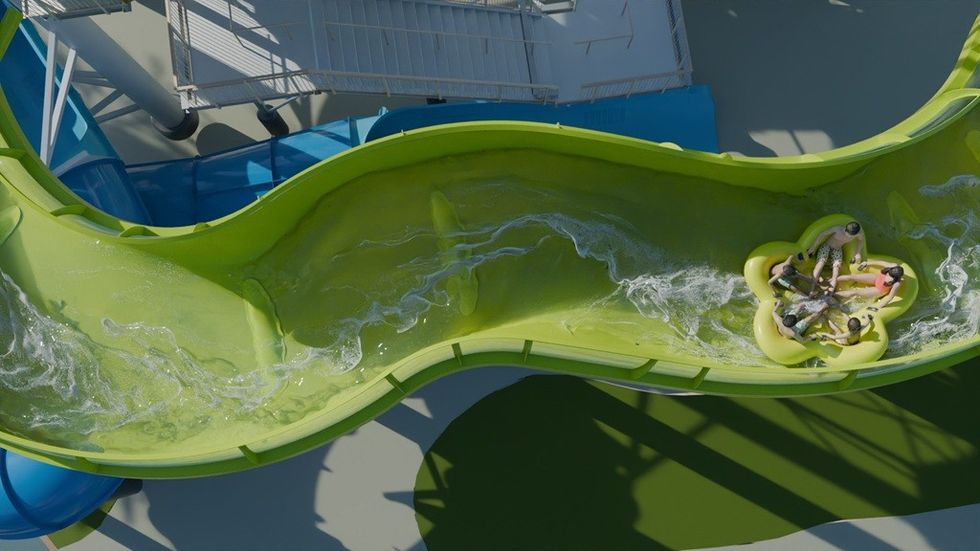



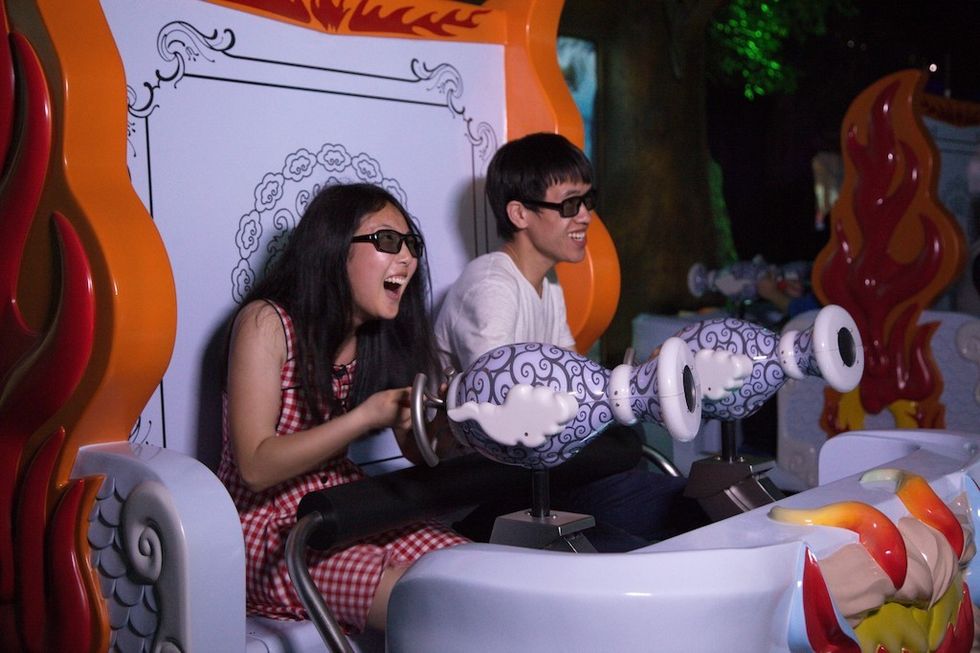
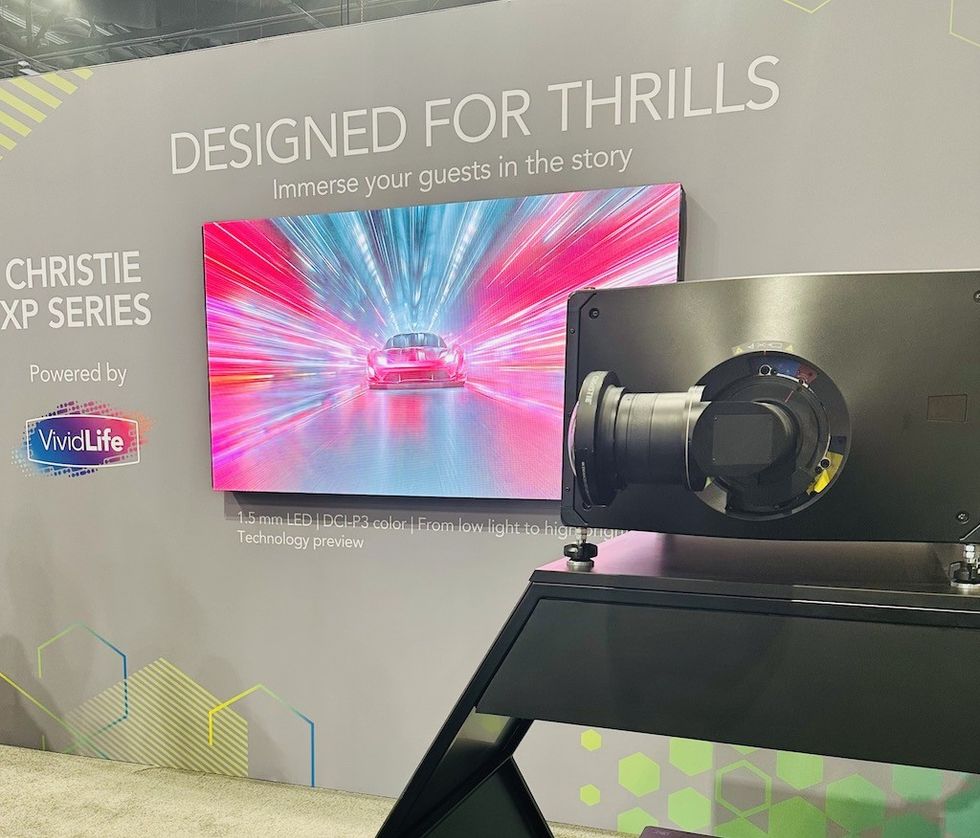
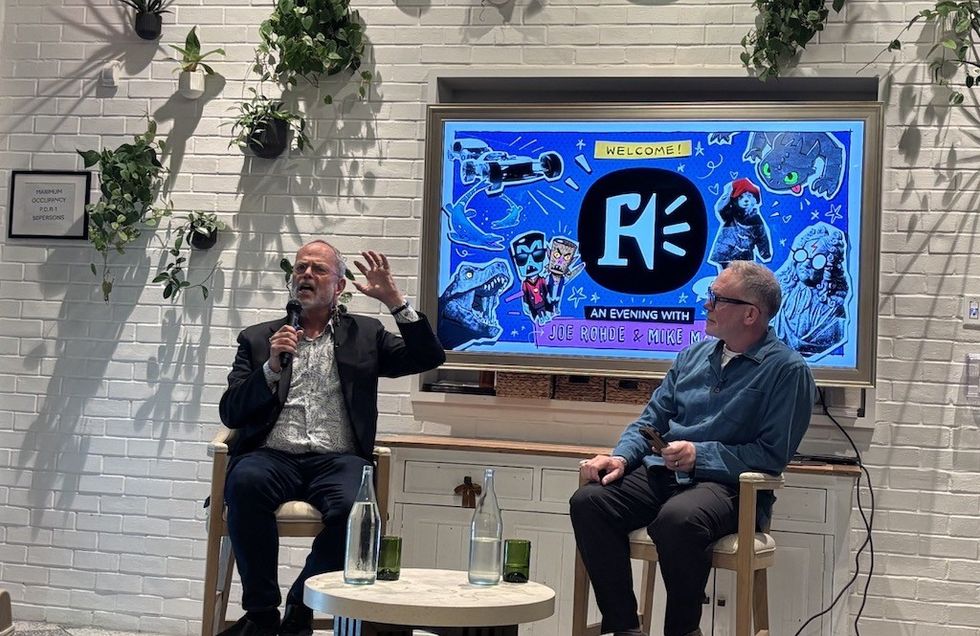
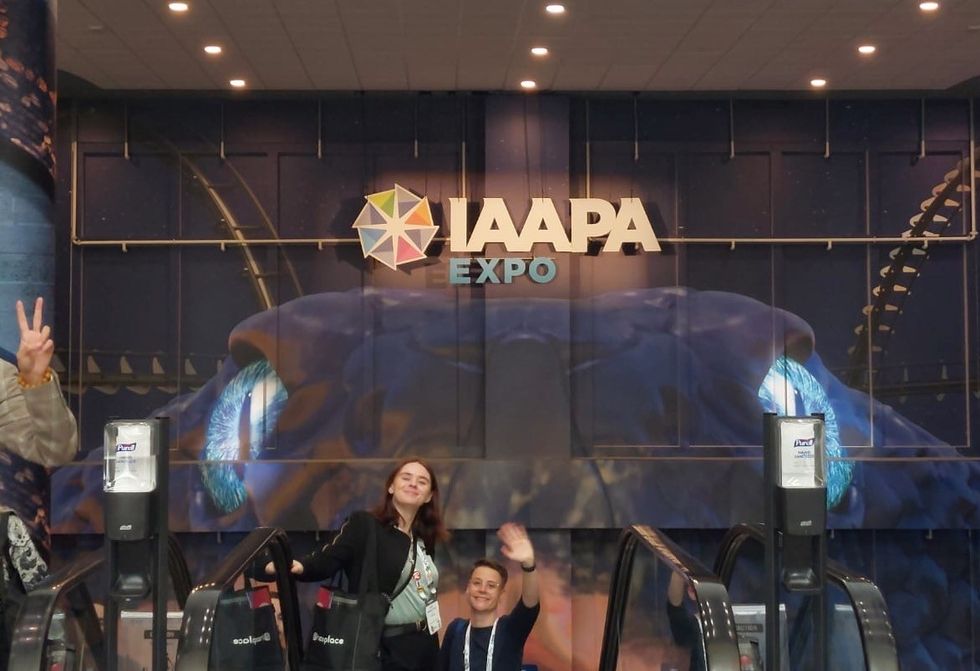 See you next year!
See you next year!
 Ian Macleod and Jordan Whittington
Ian Macleod and Jordan Whittington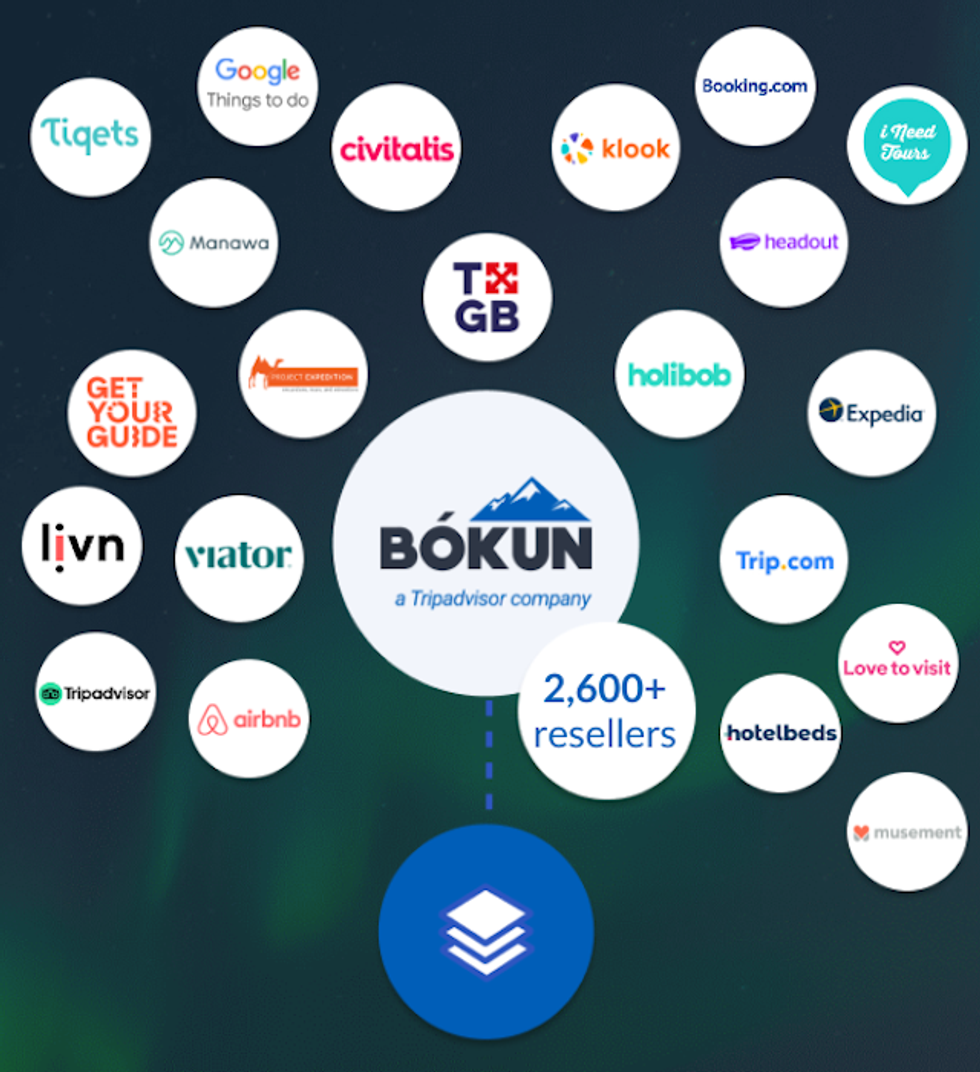


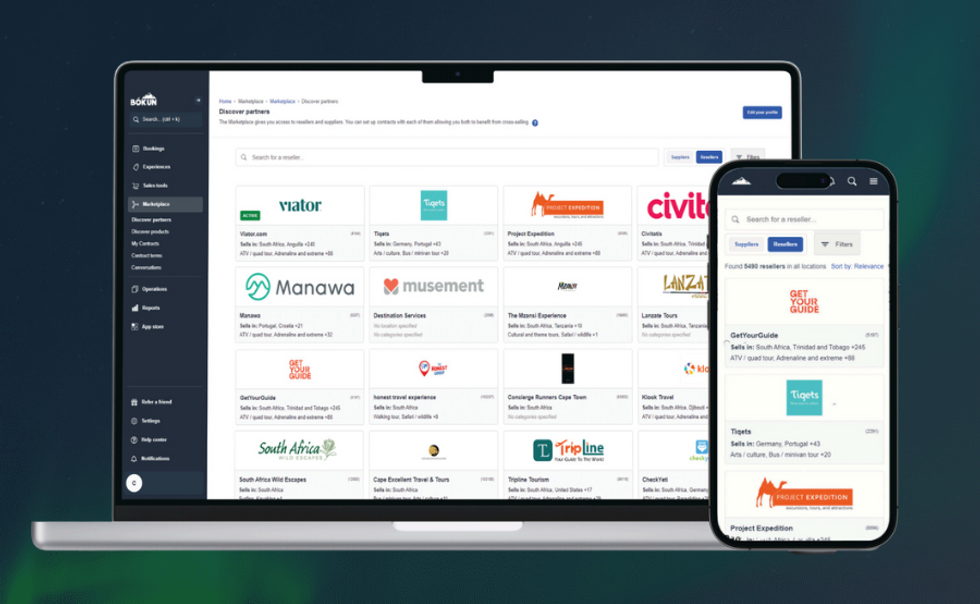

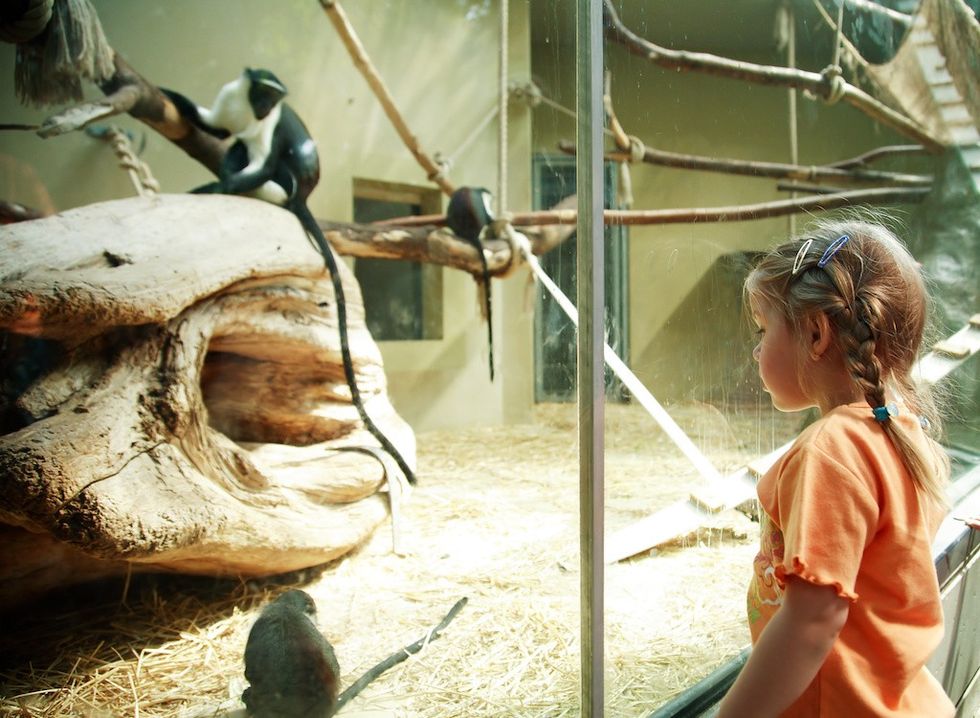
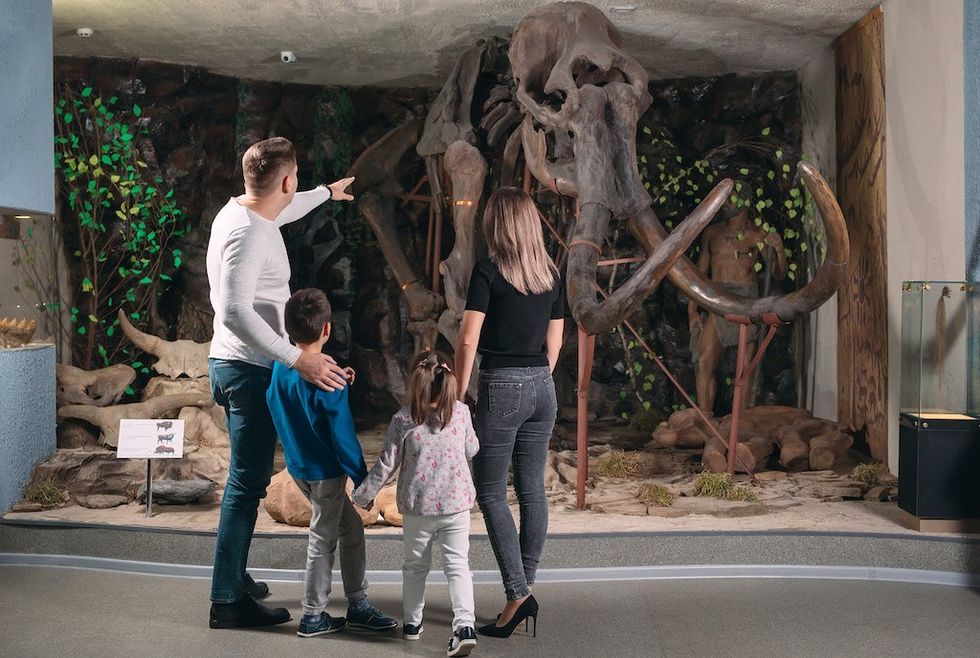
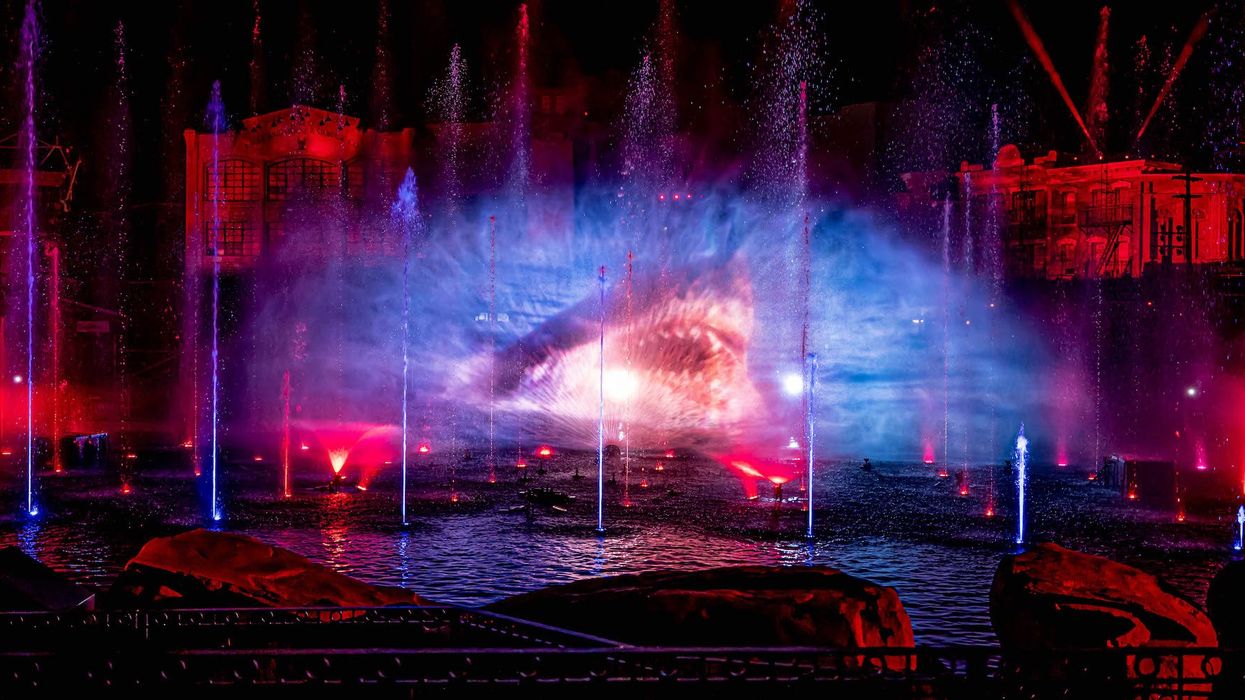
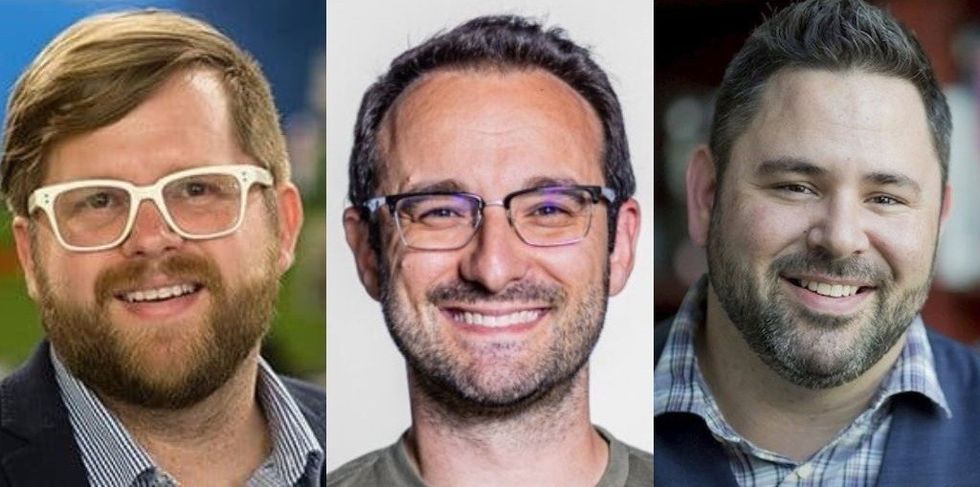 Jason McManus, Jim Shumway, and Mike Aiello
Jason McManus, Jim Shumway, and Mike Aiello